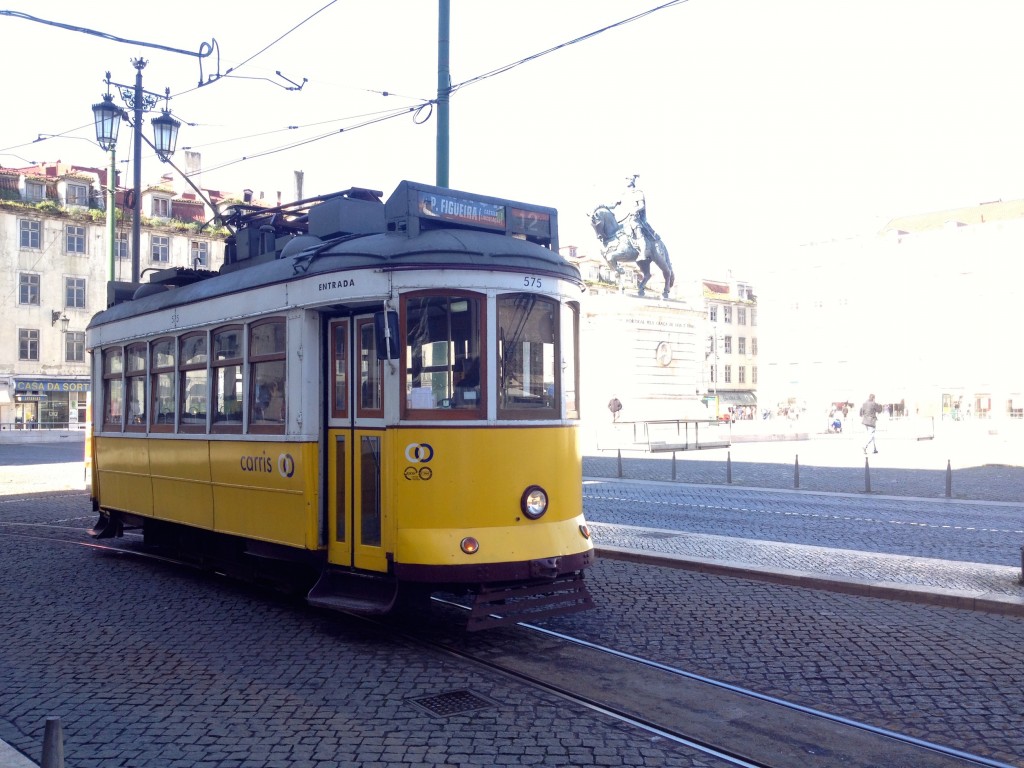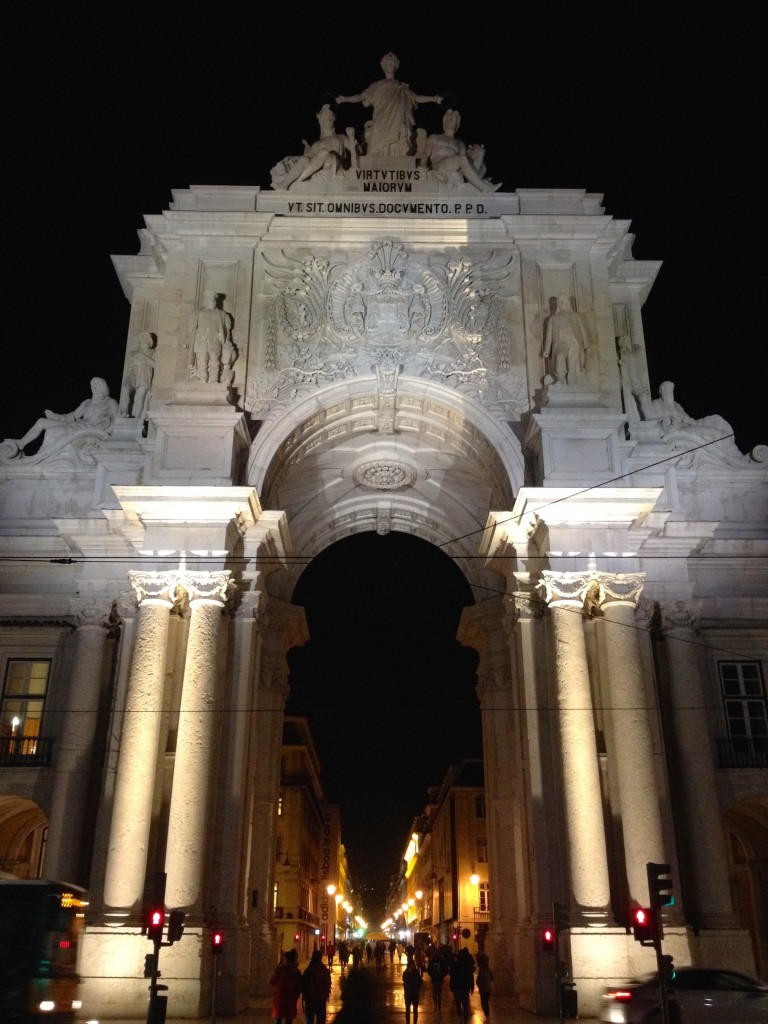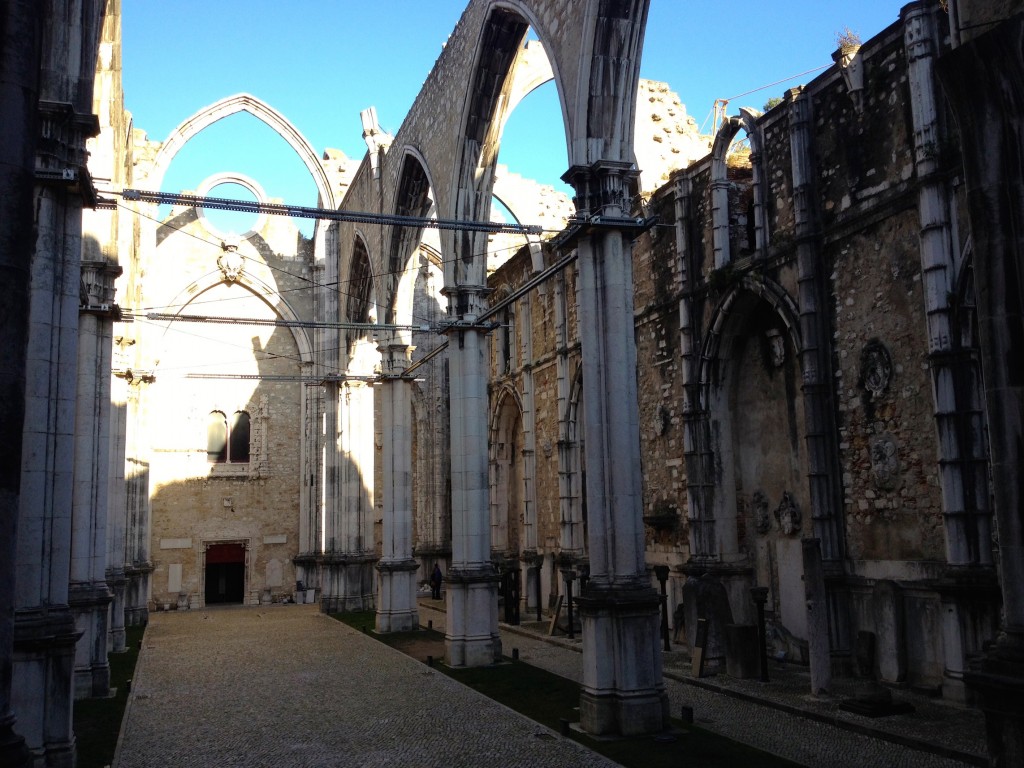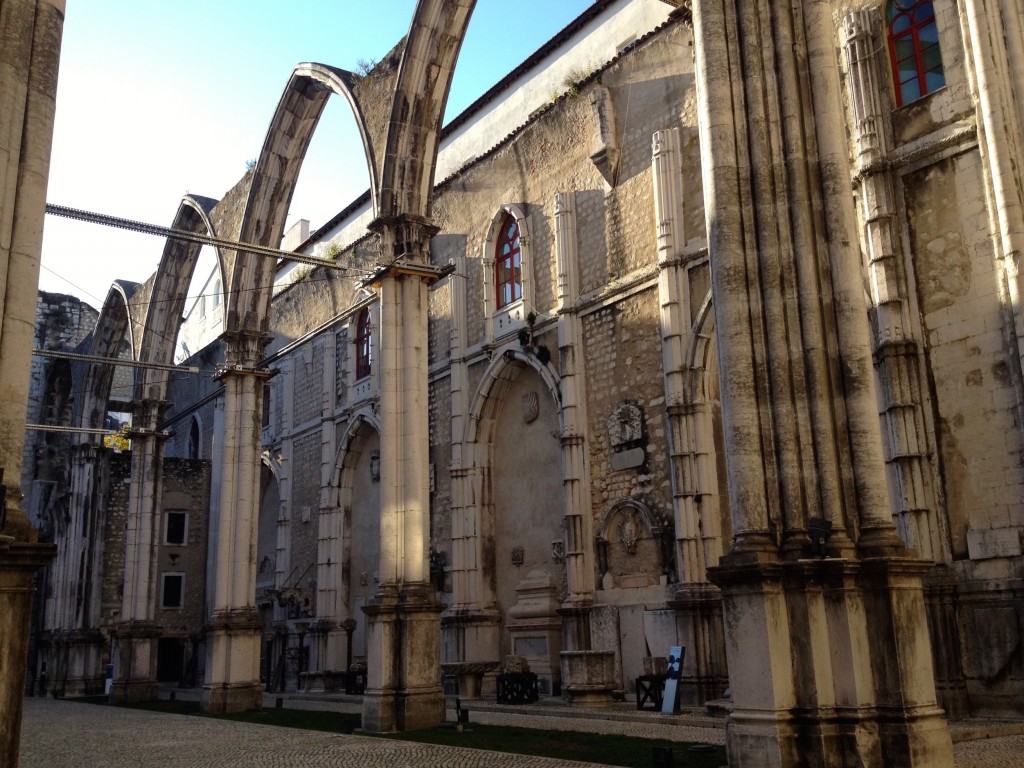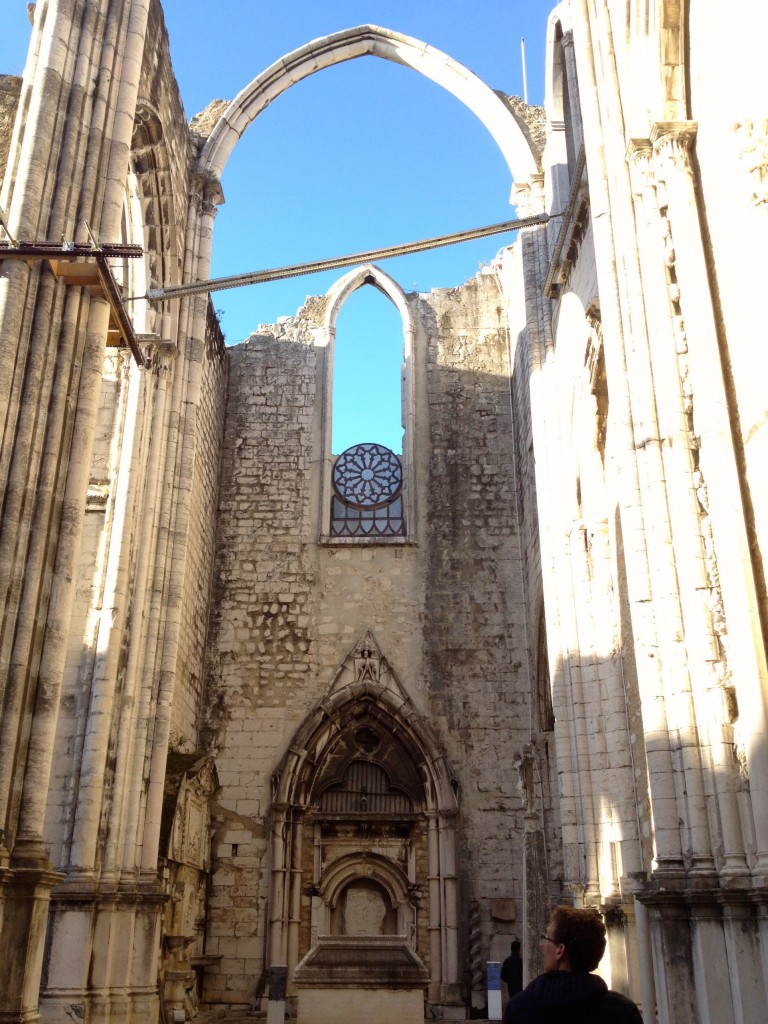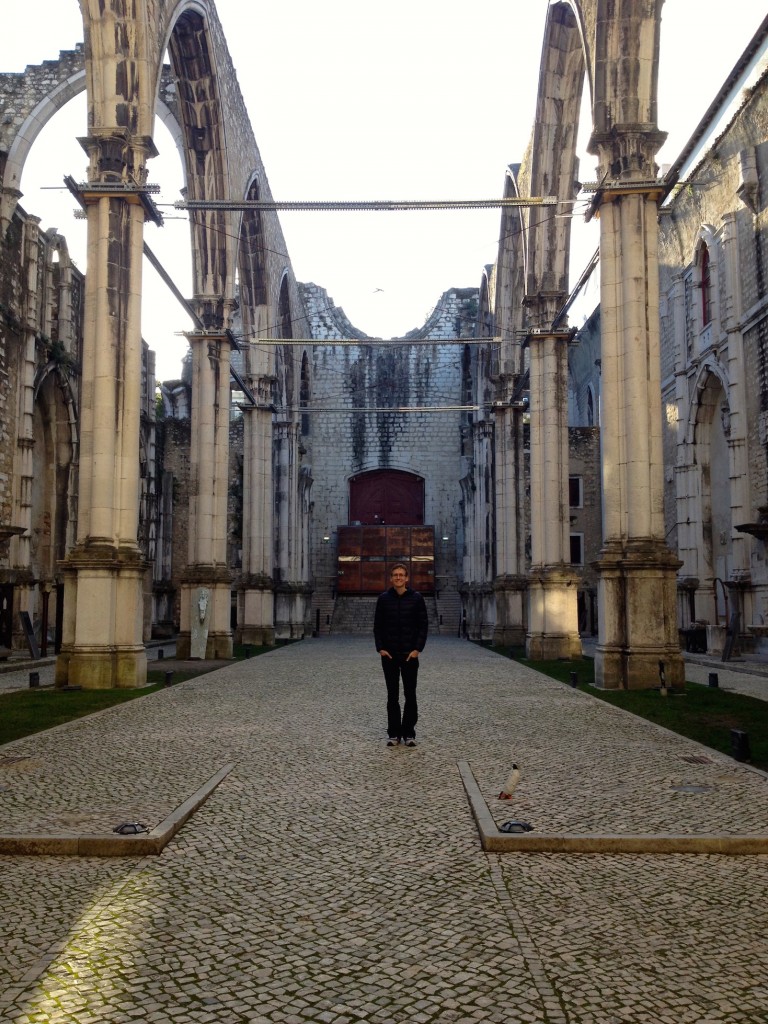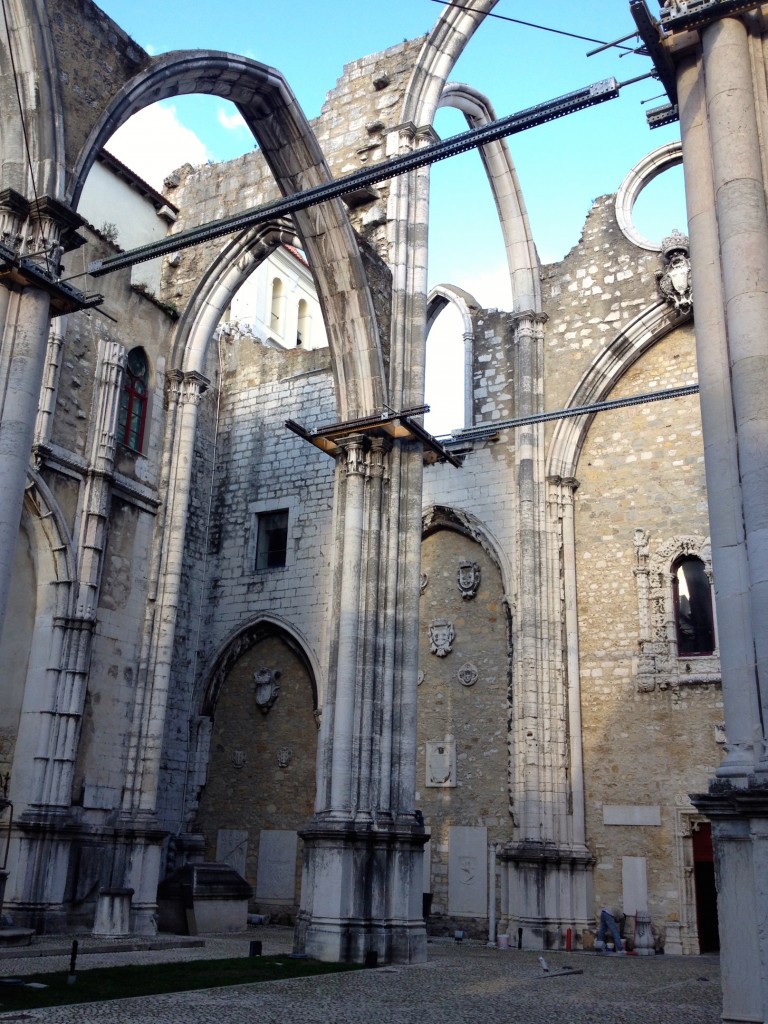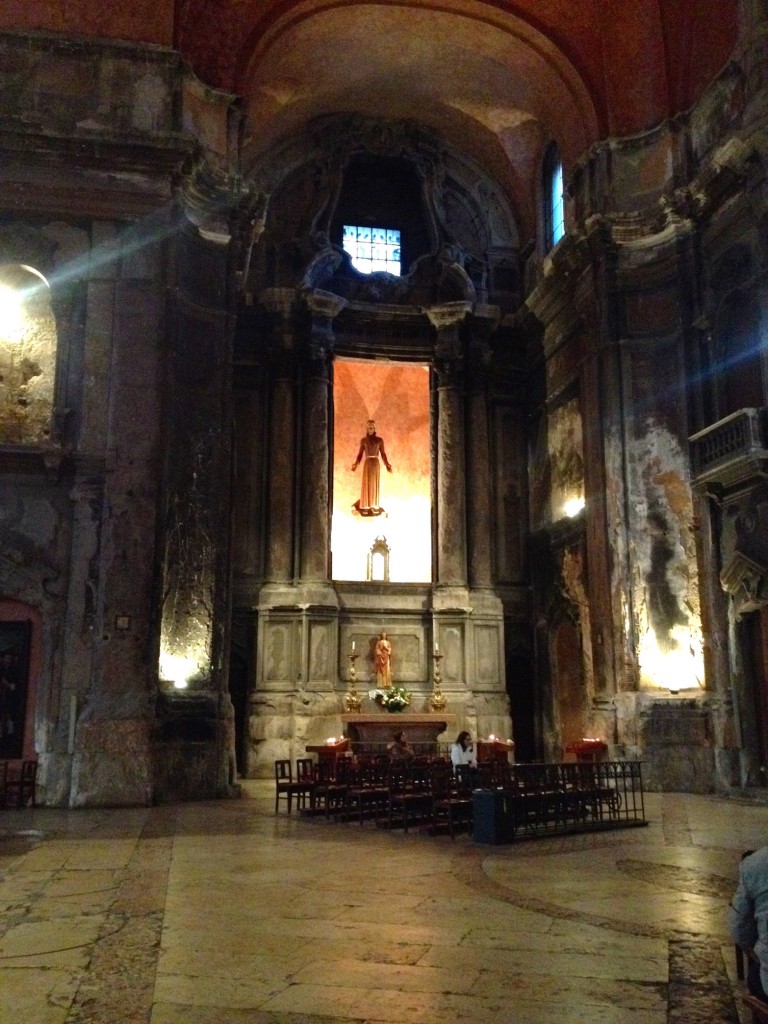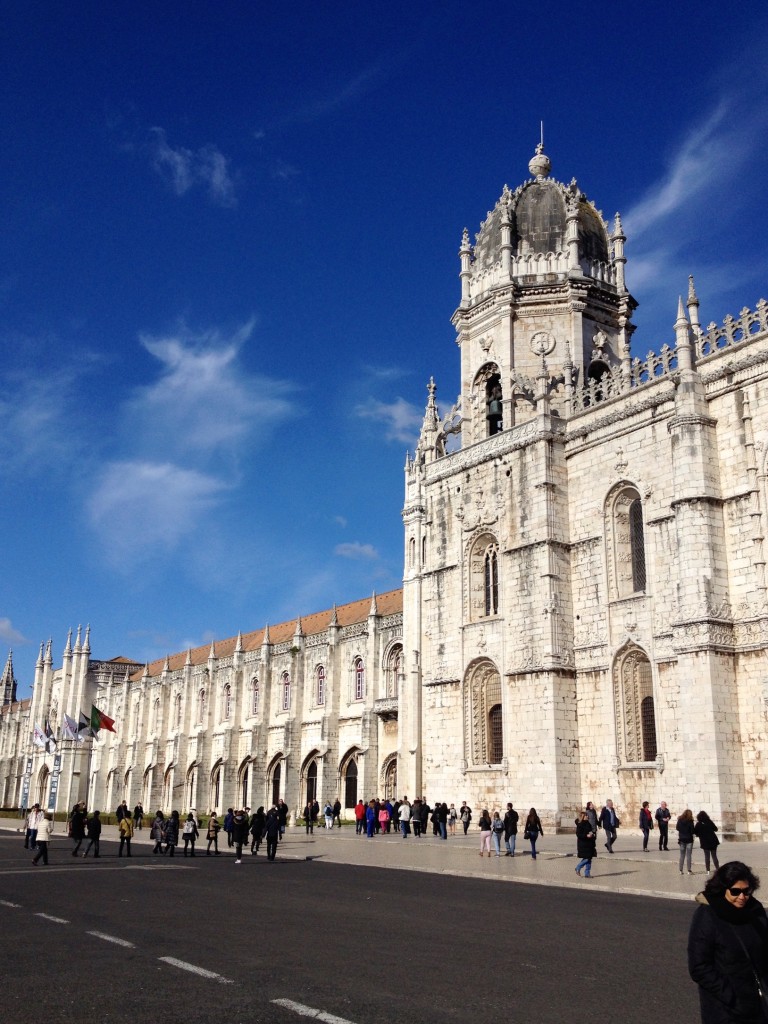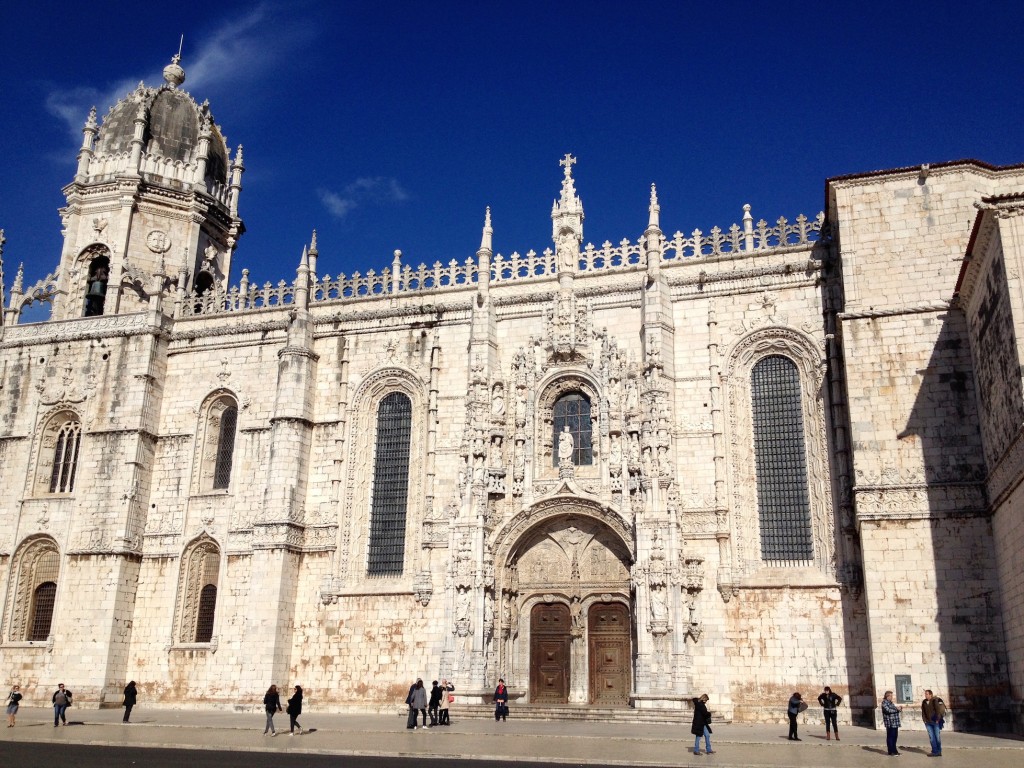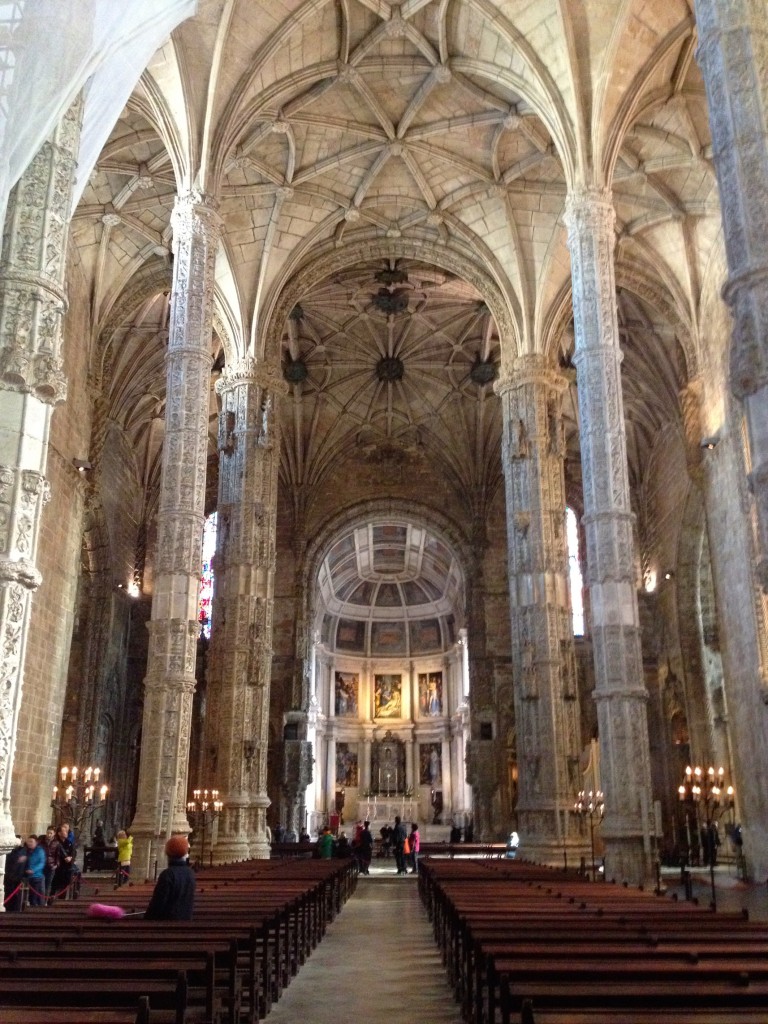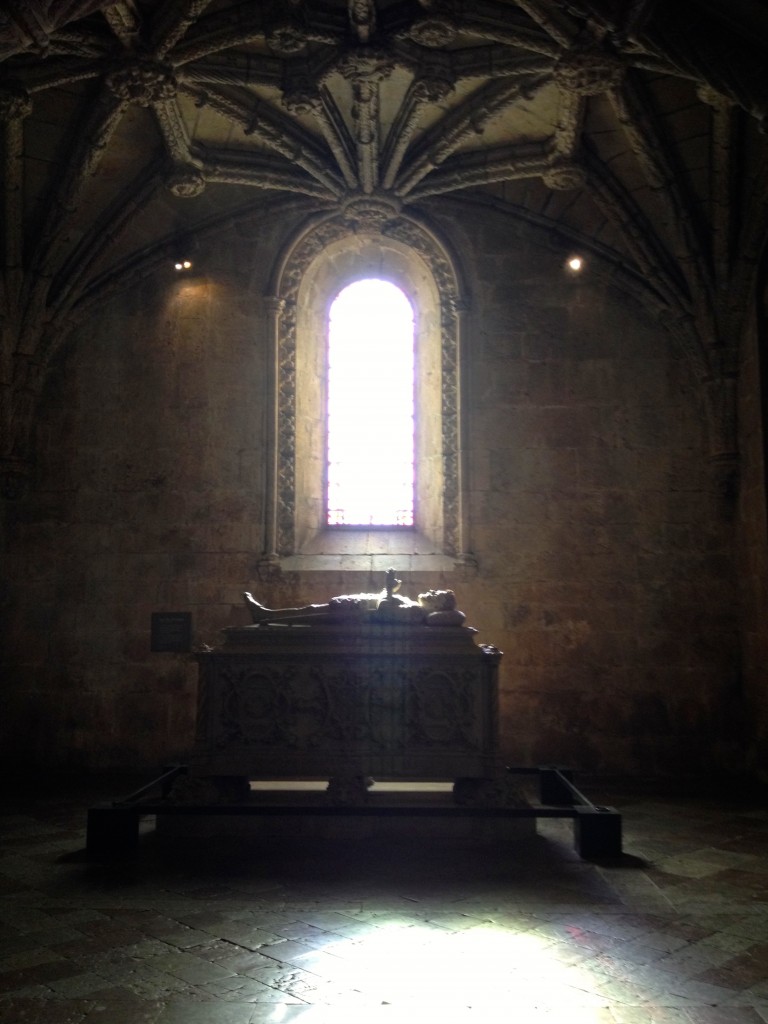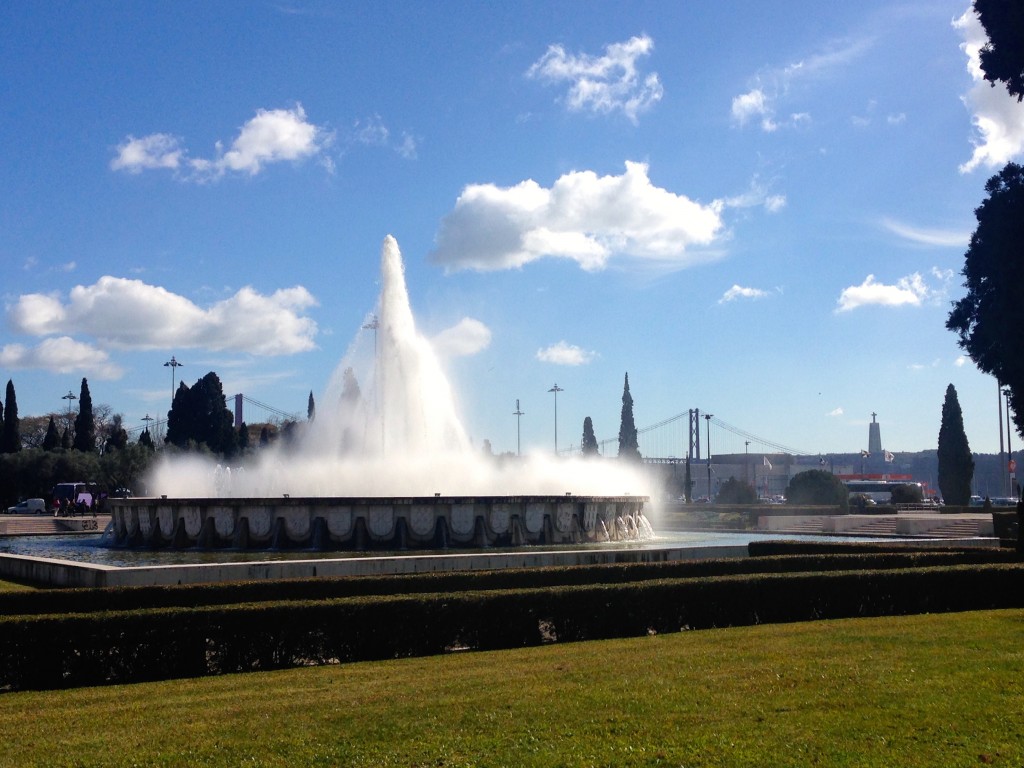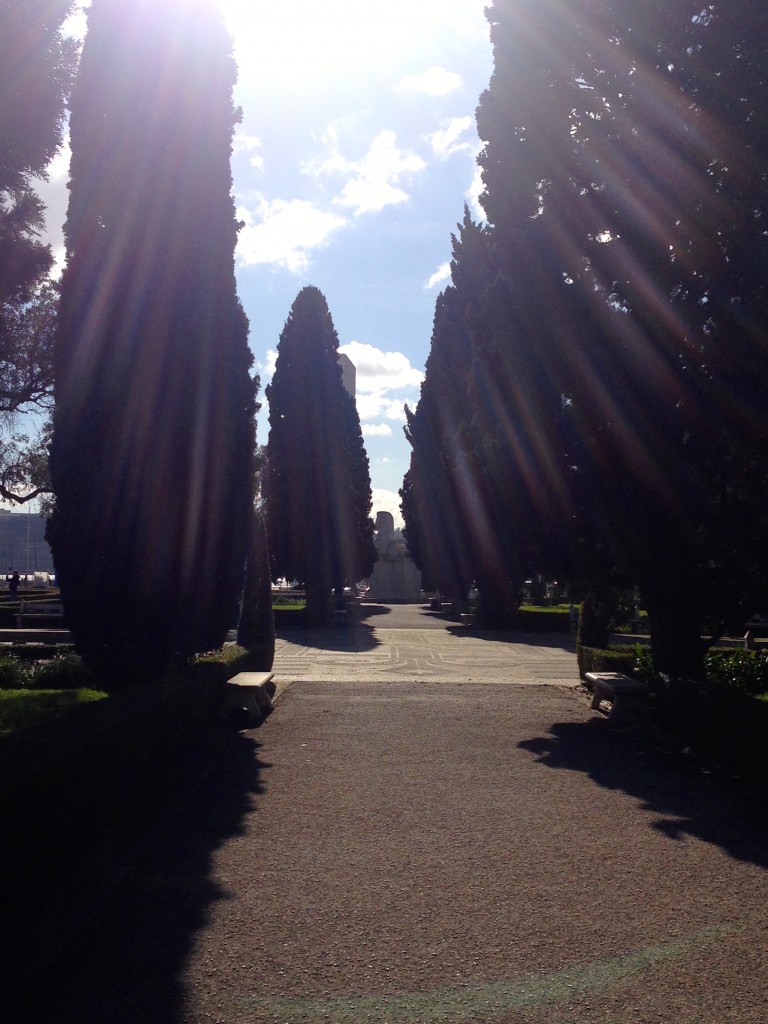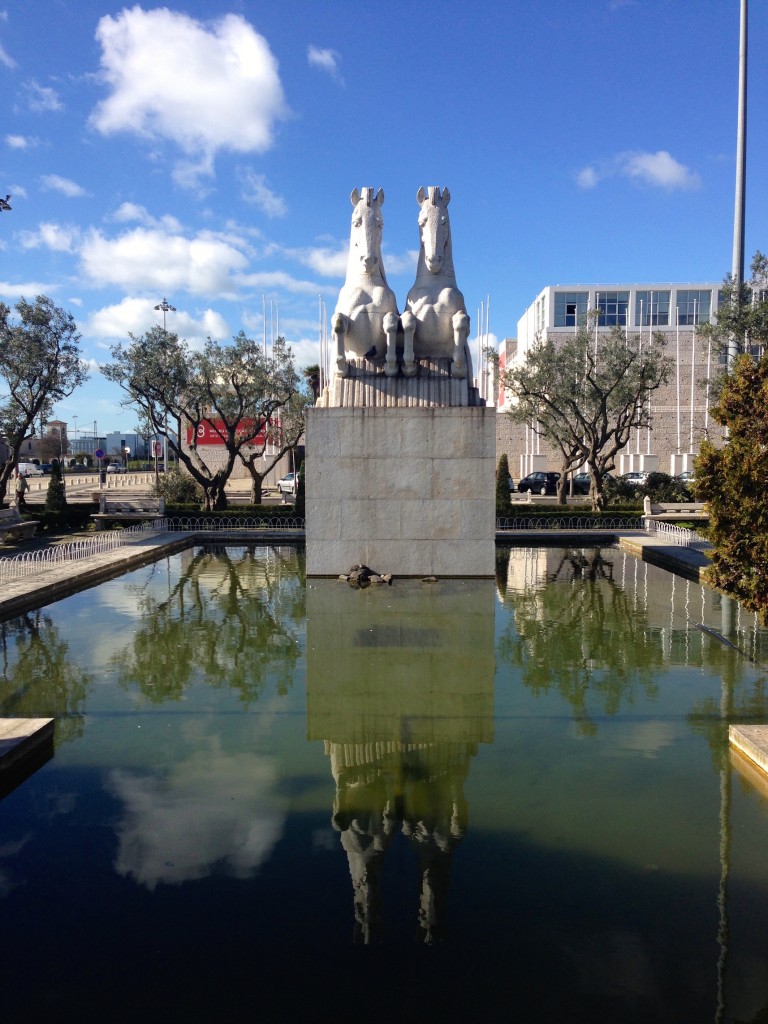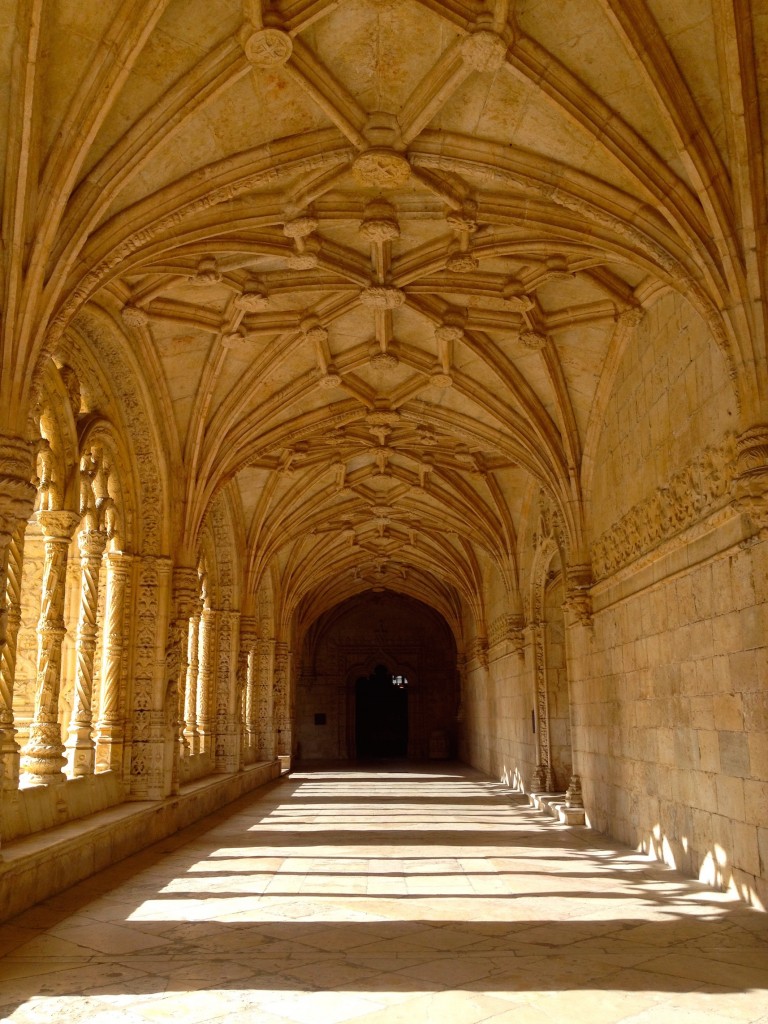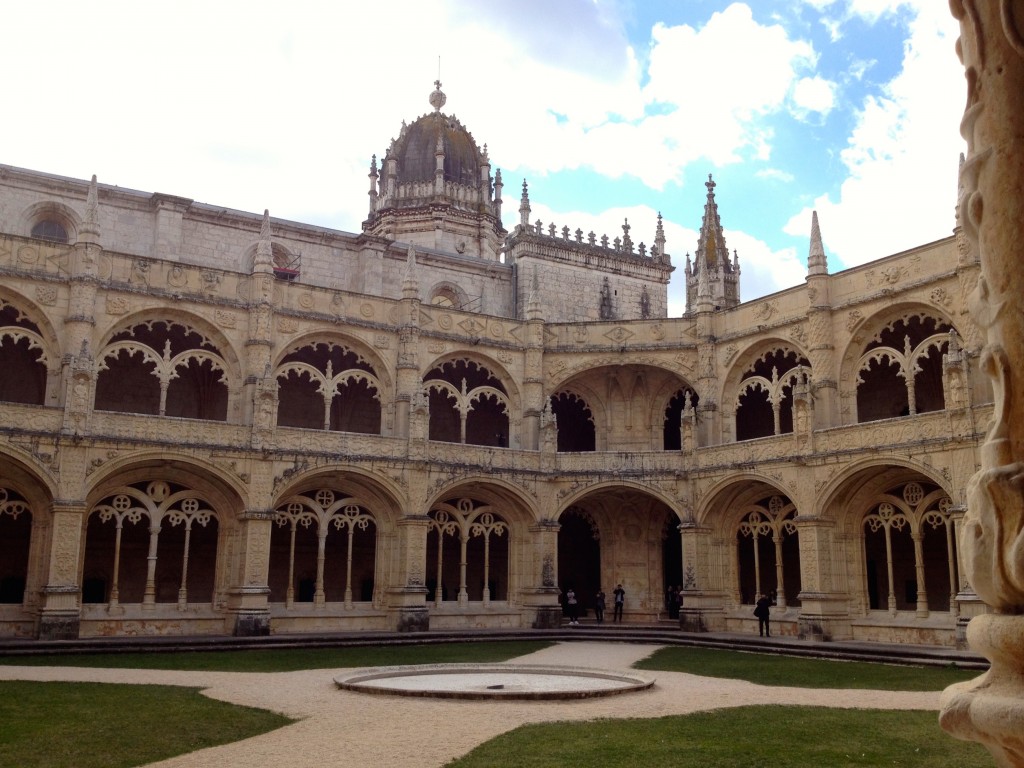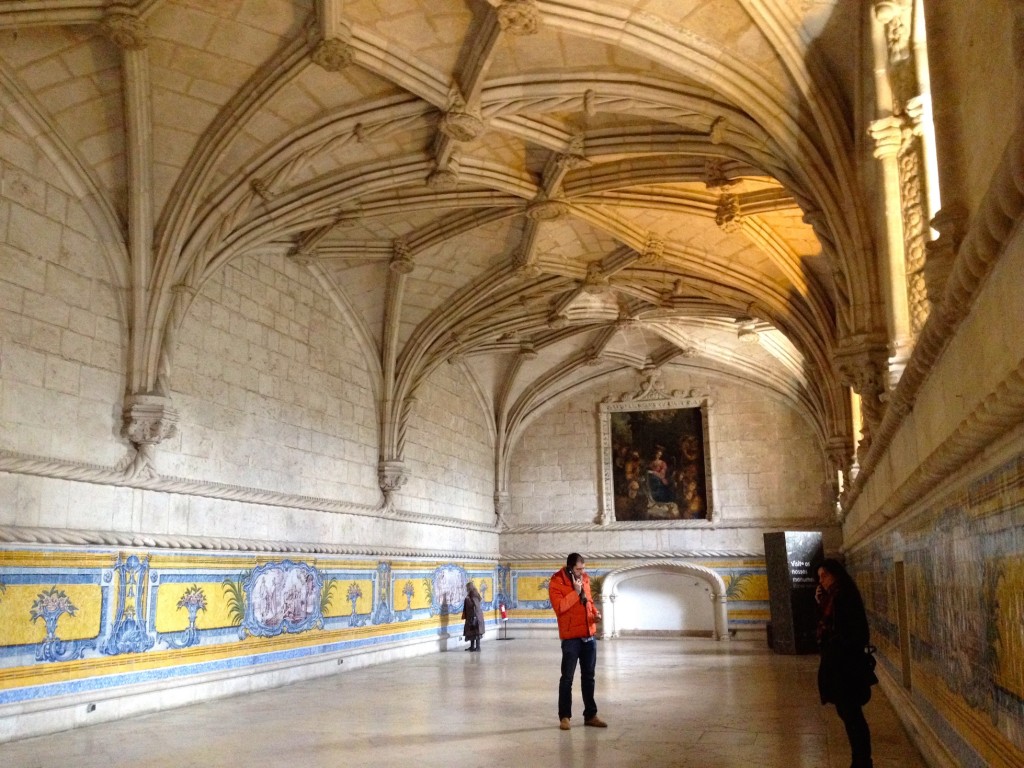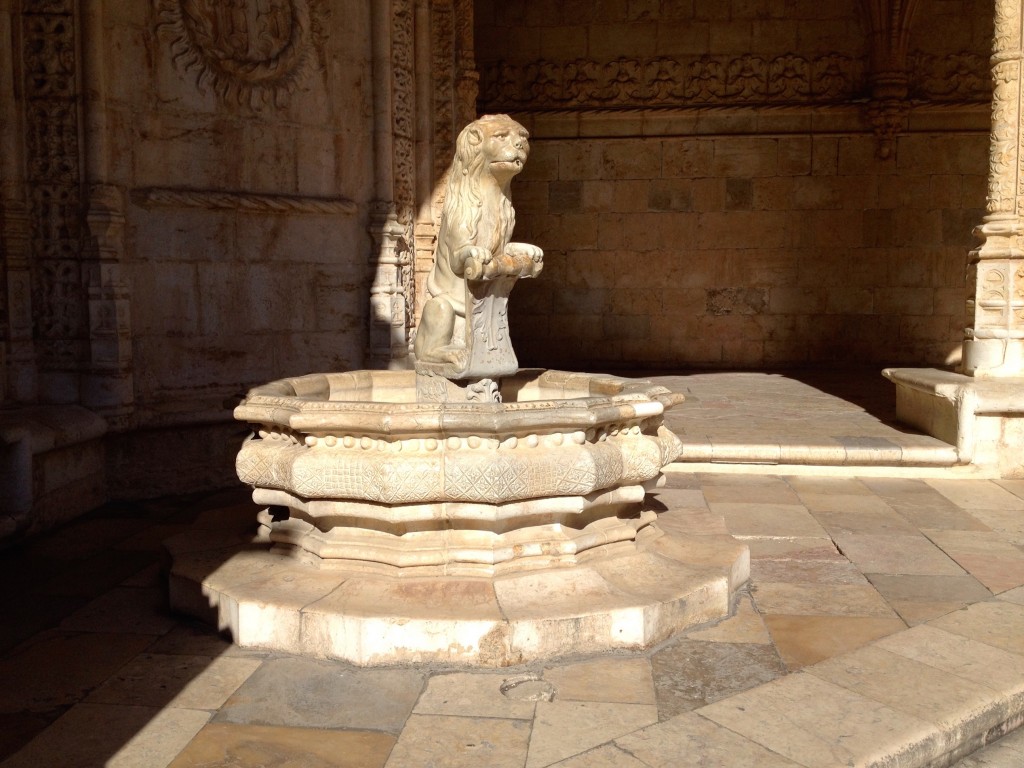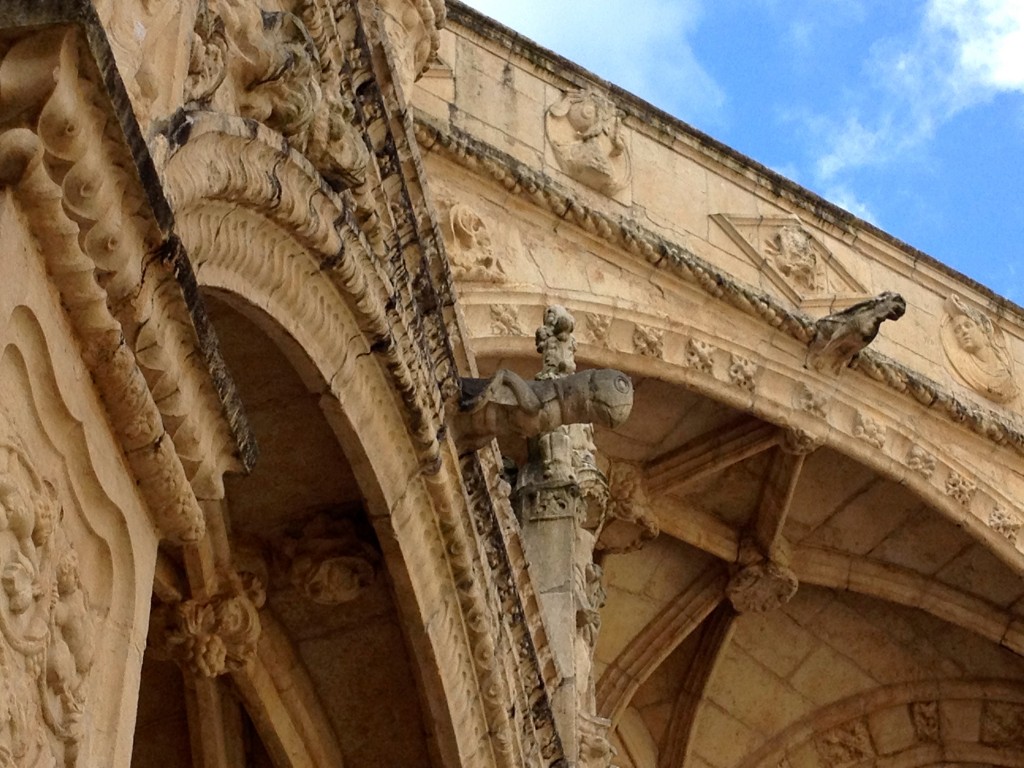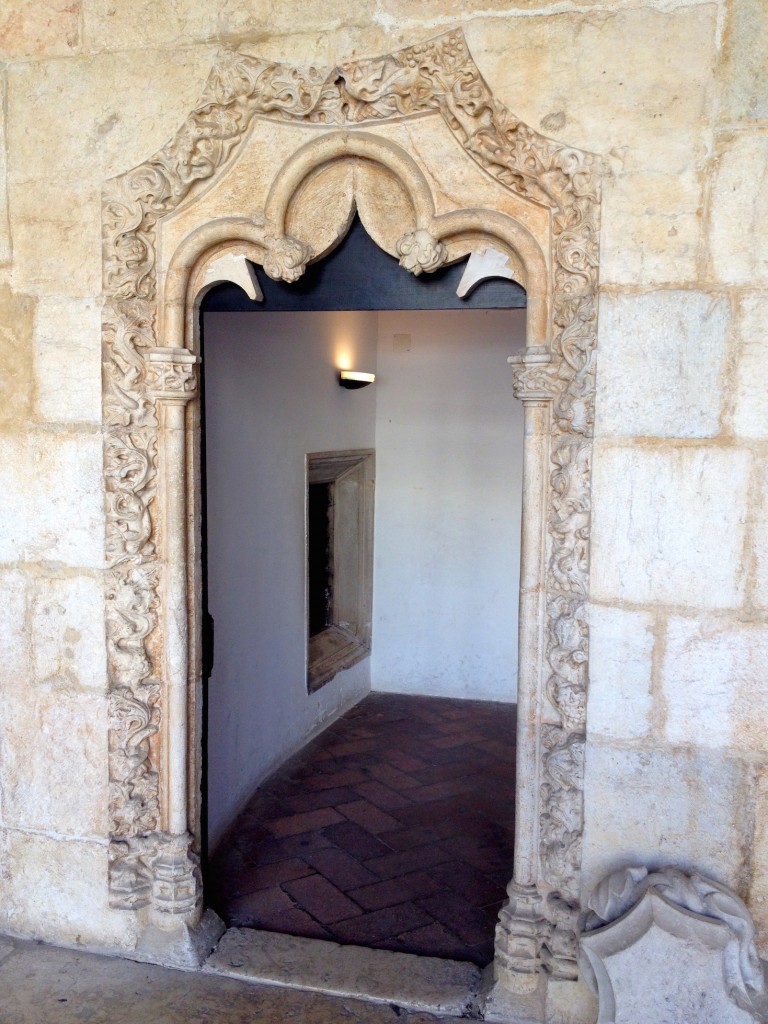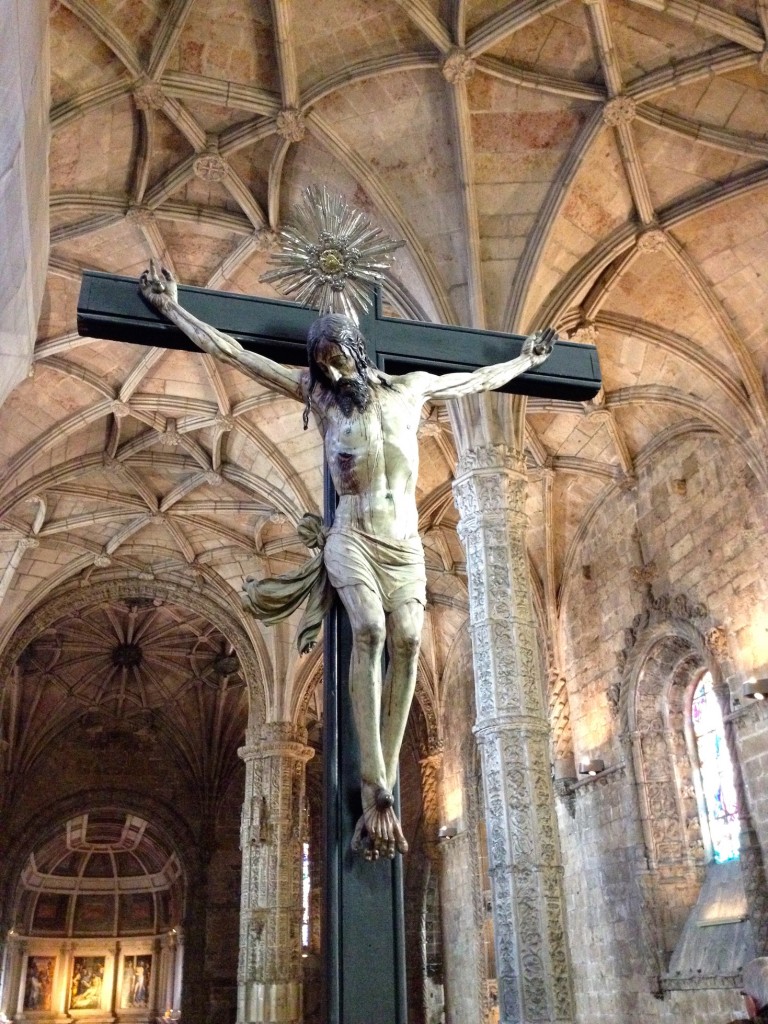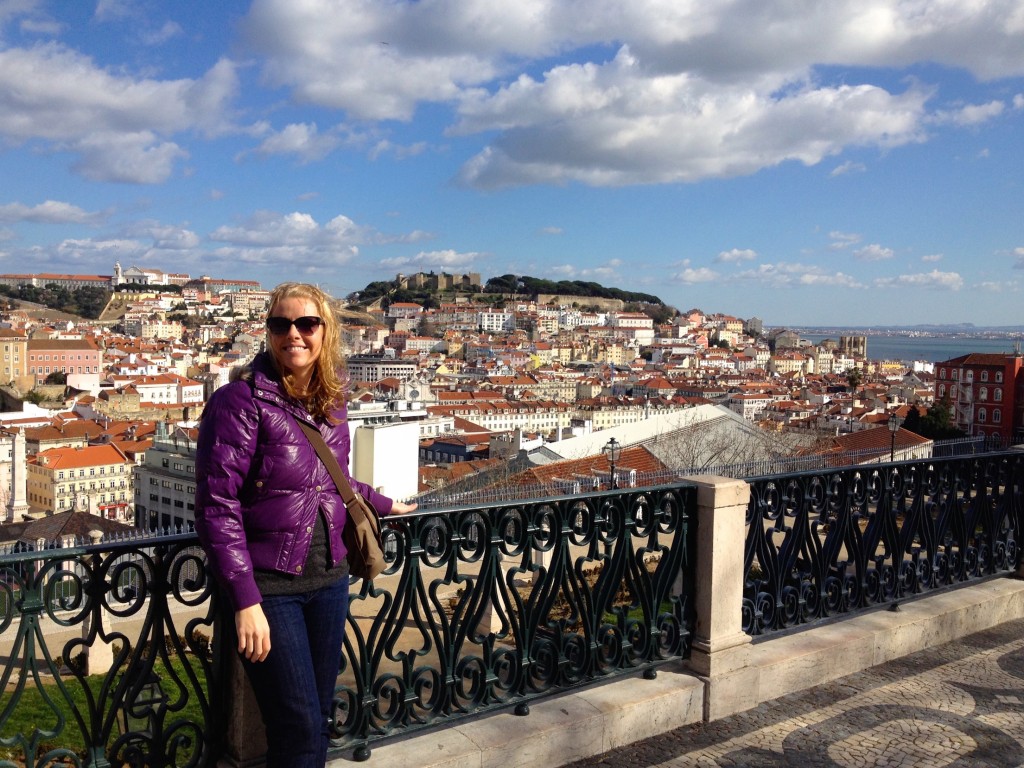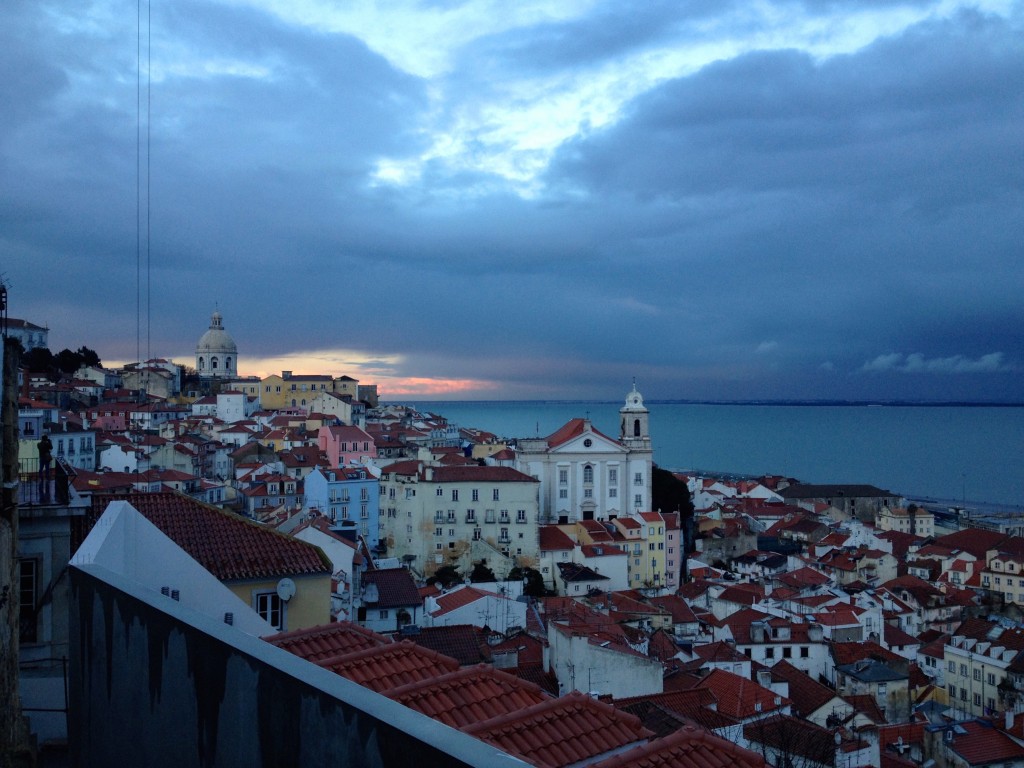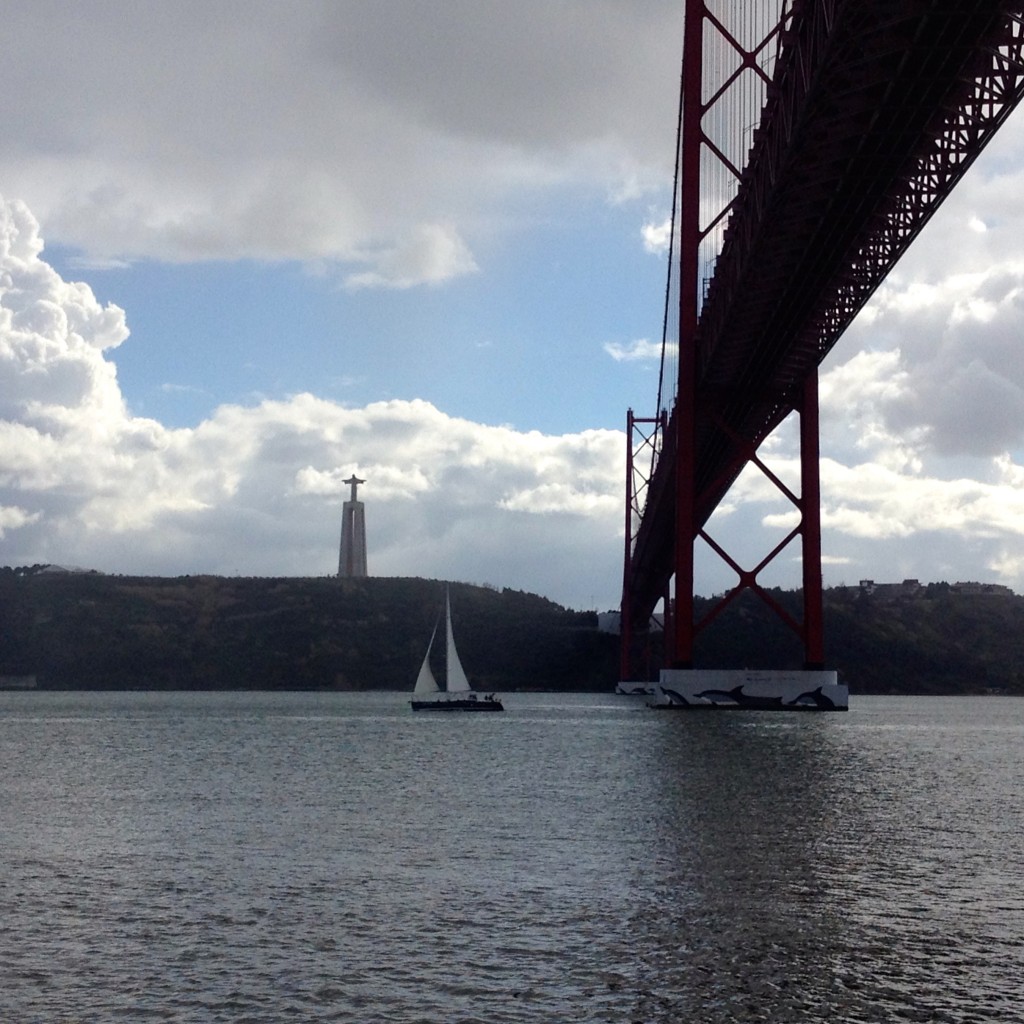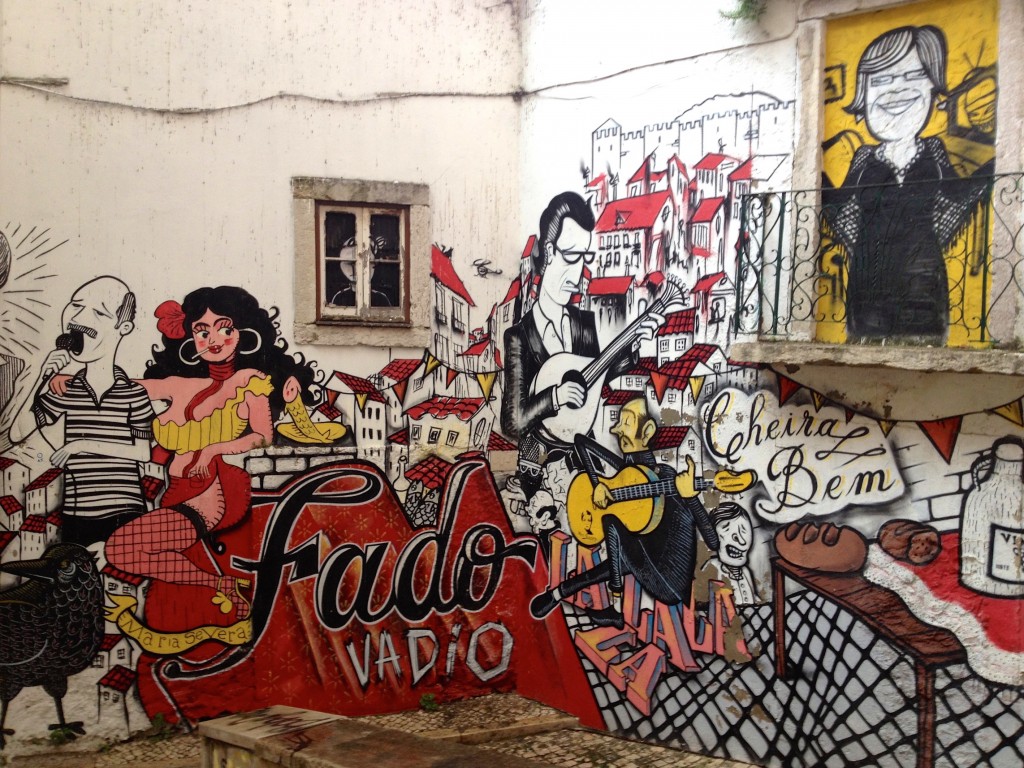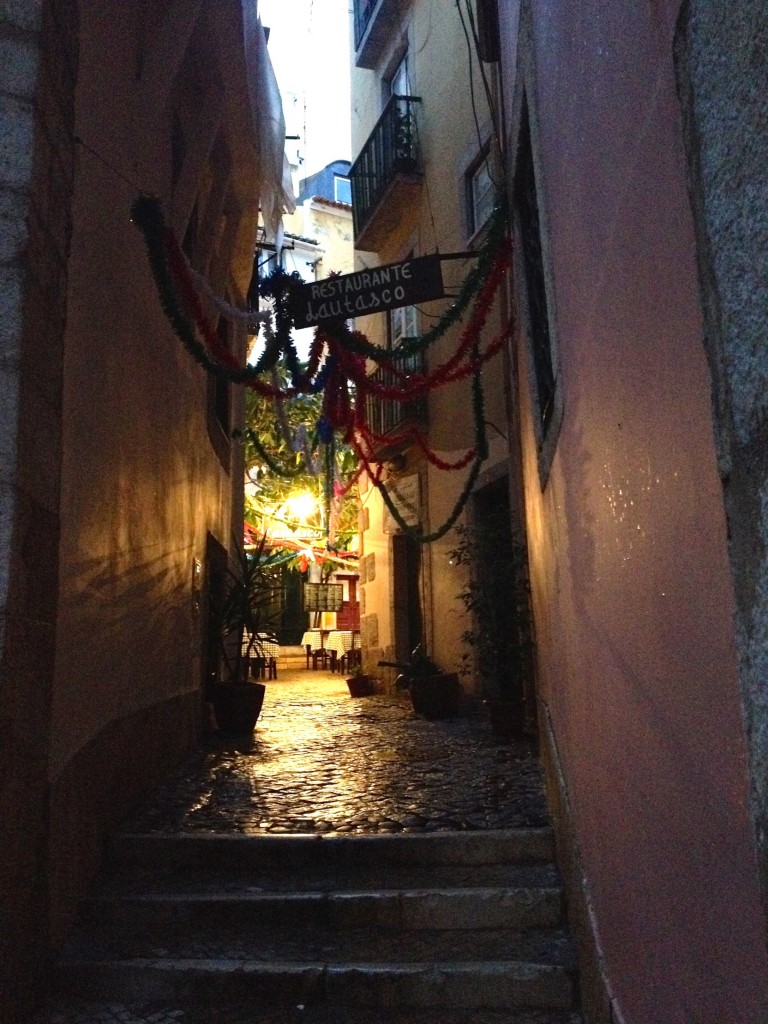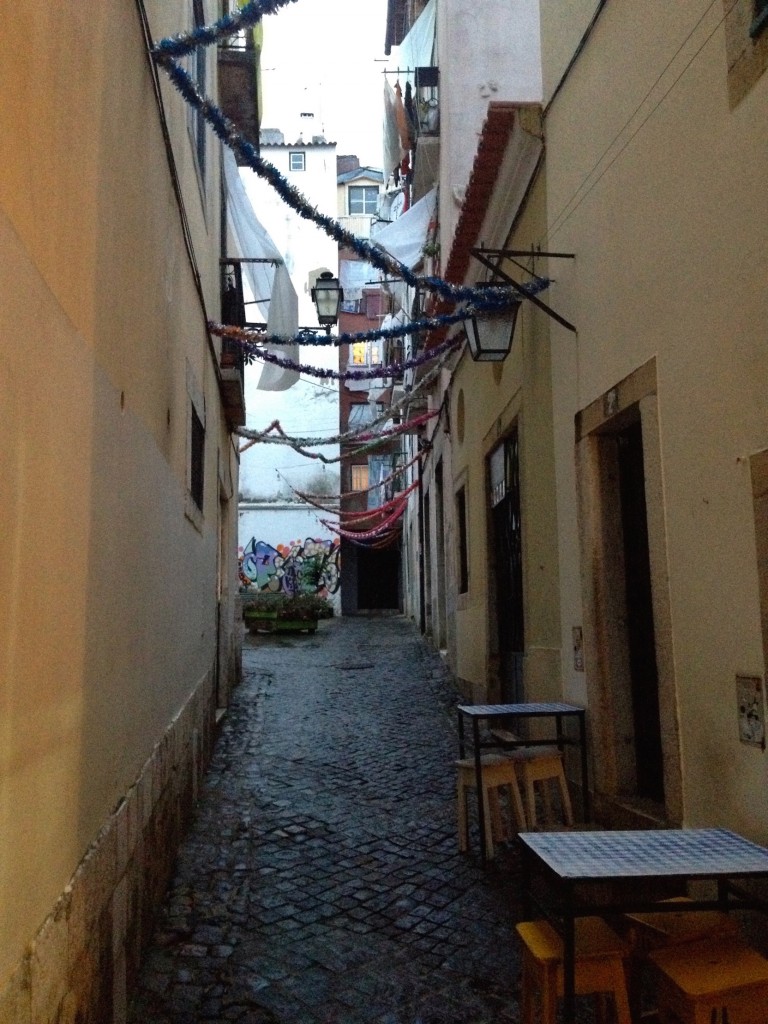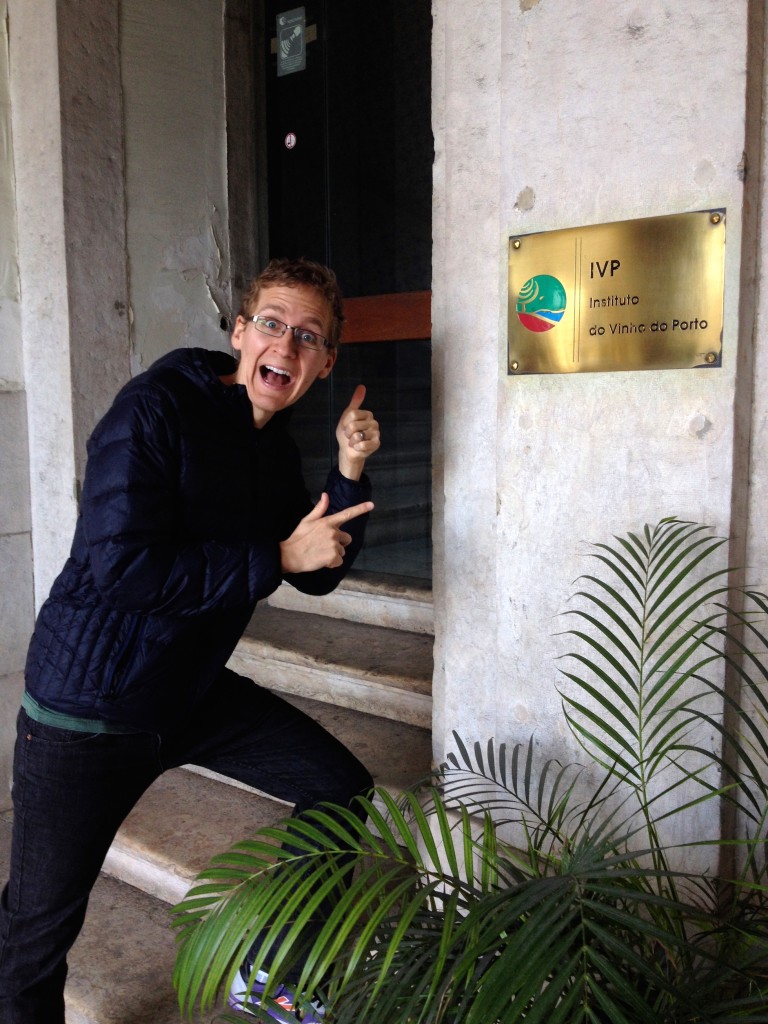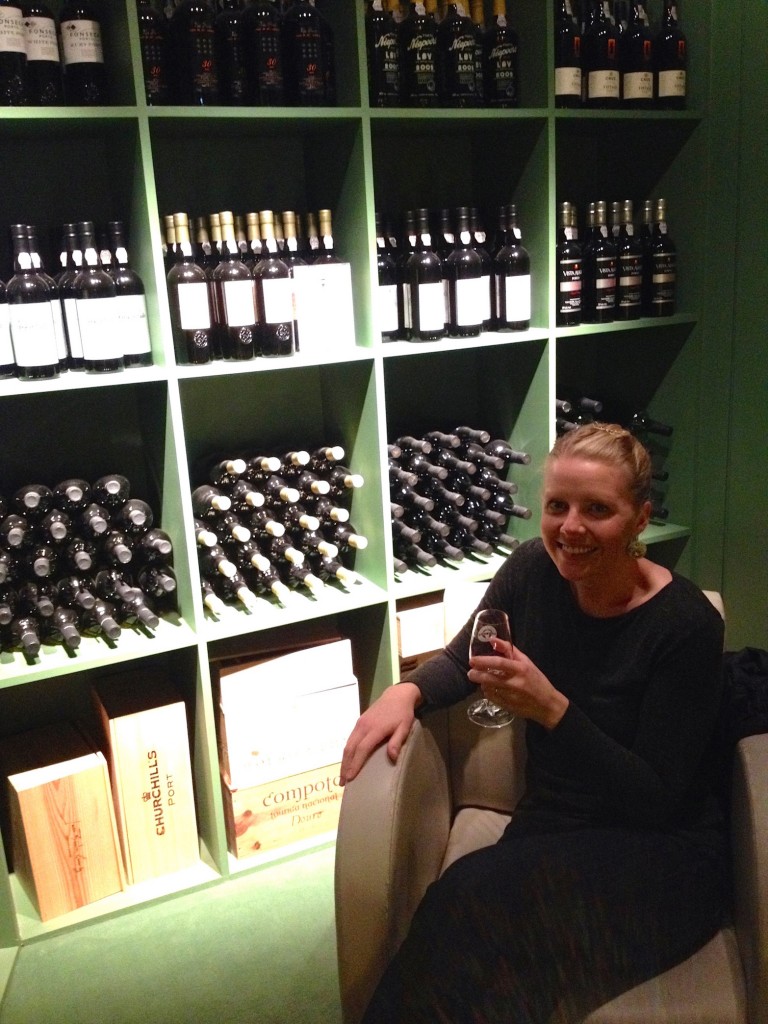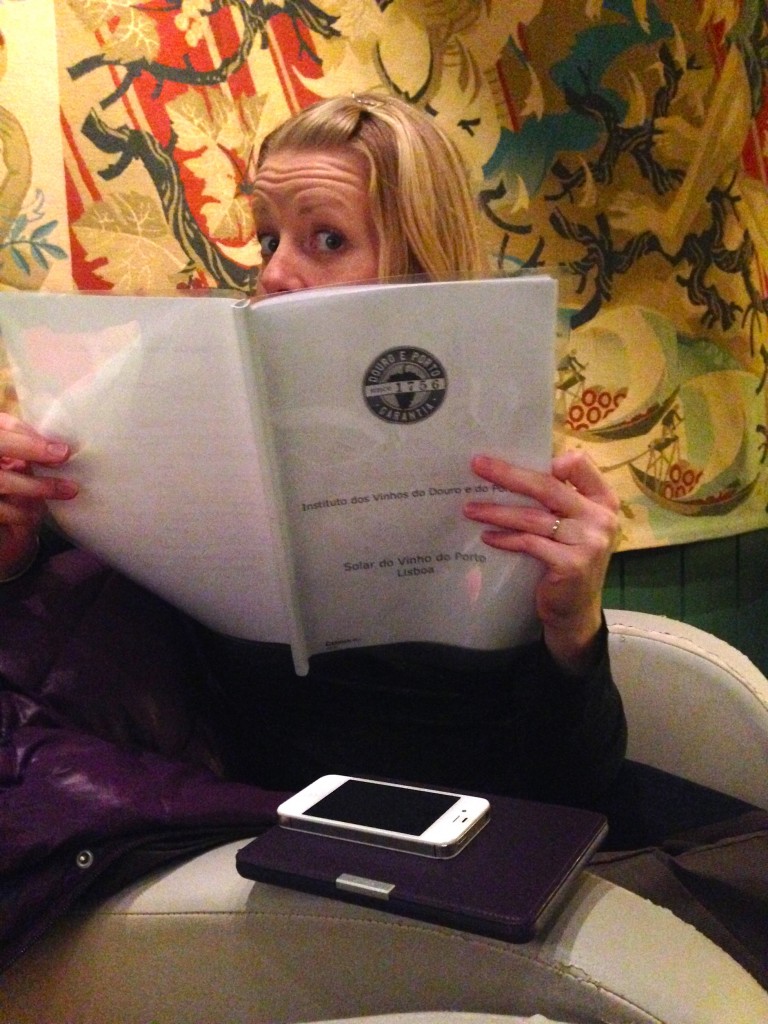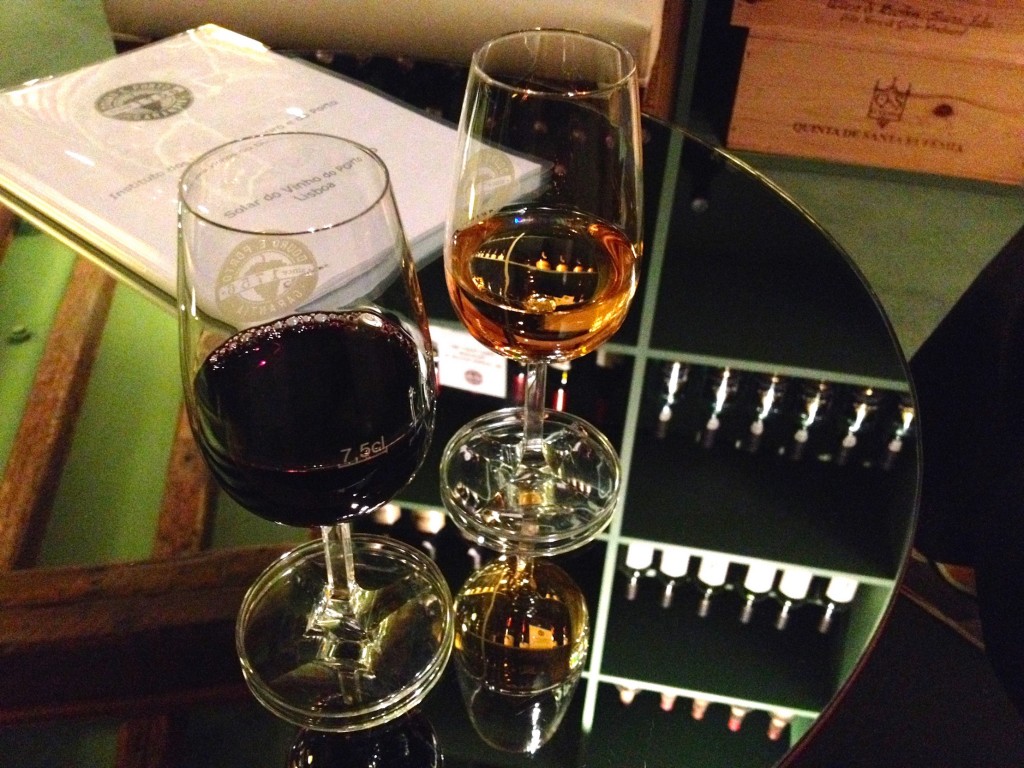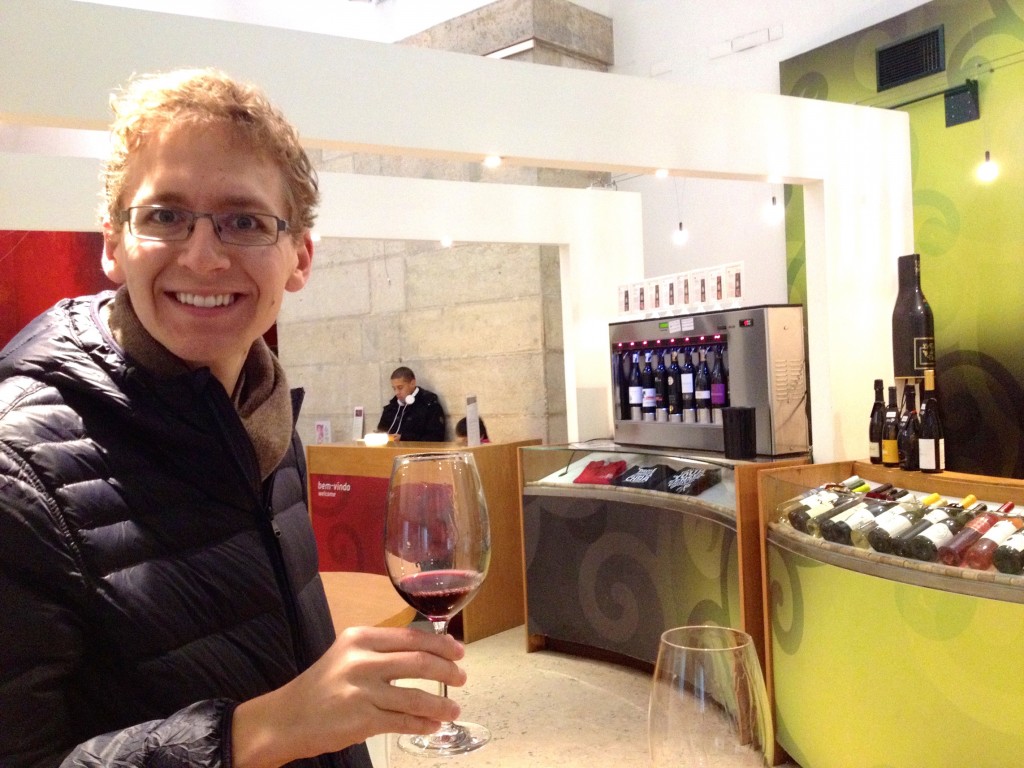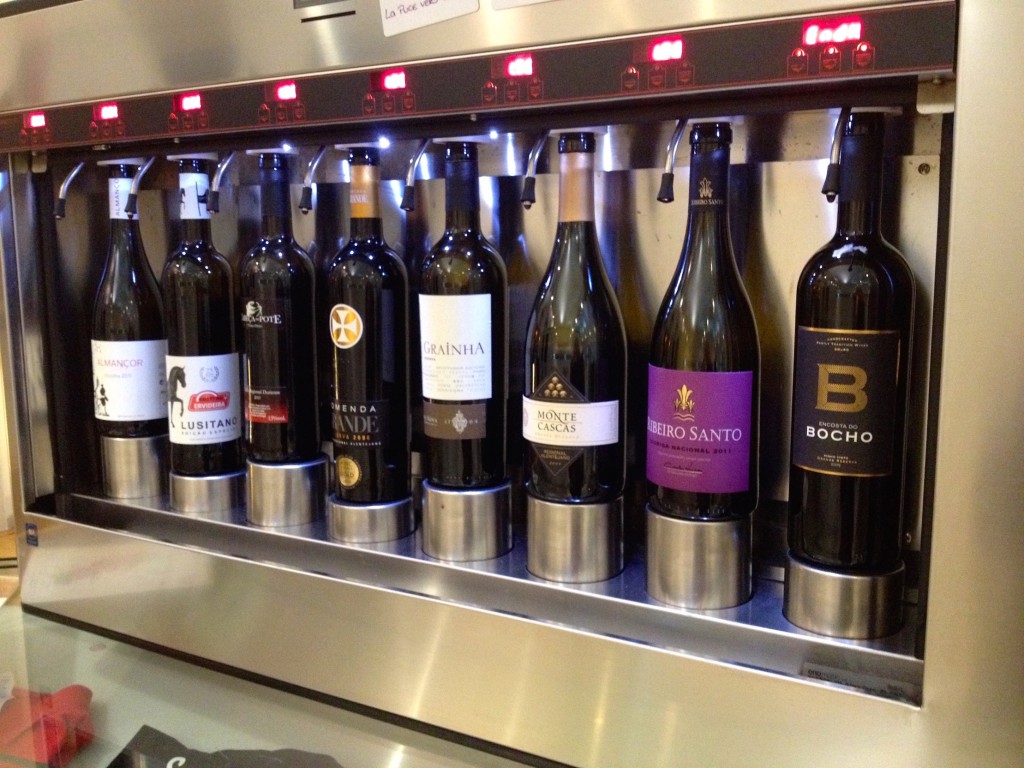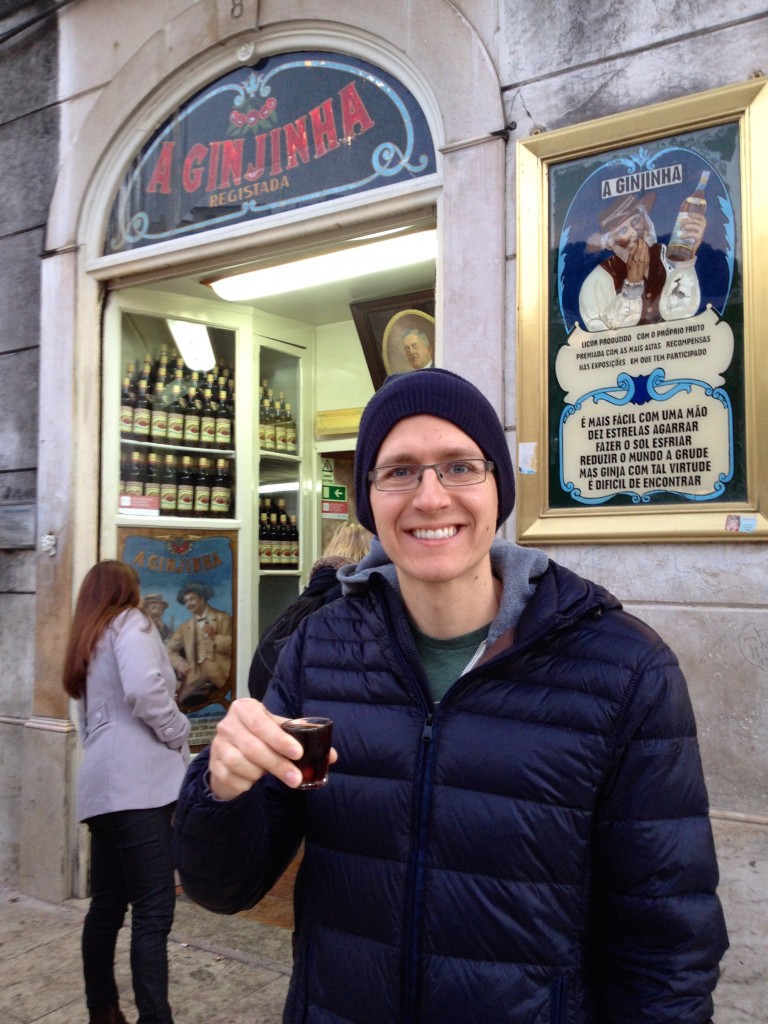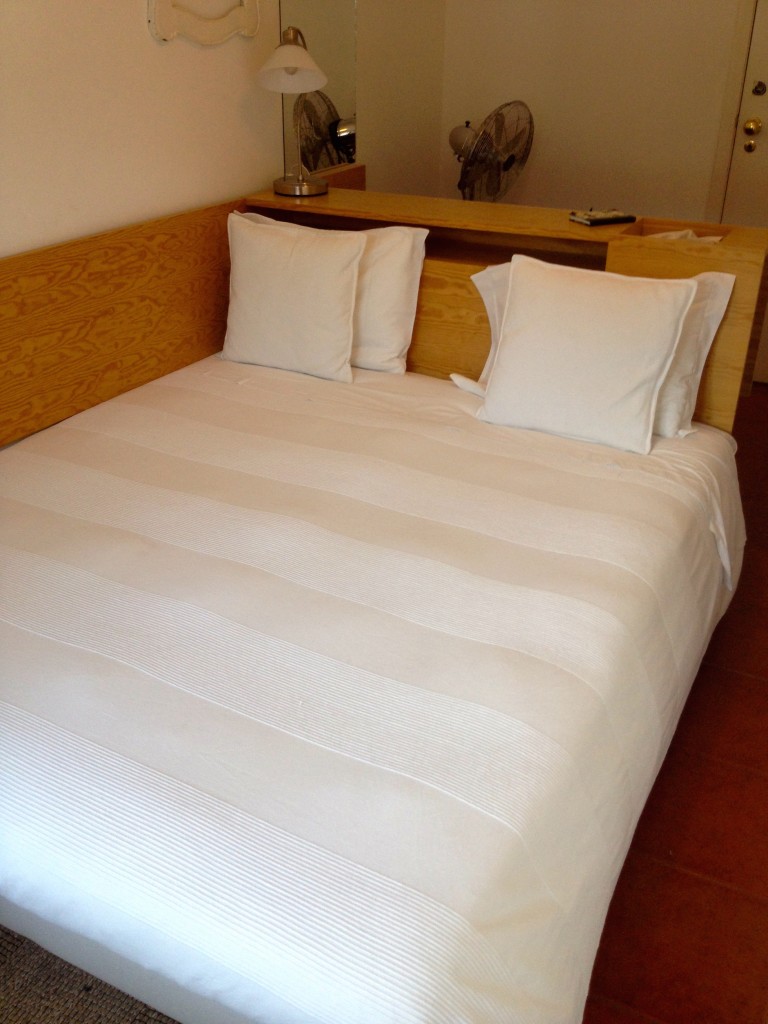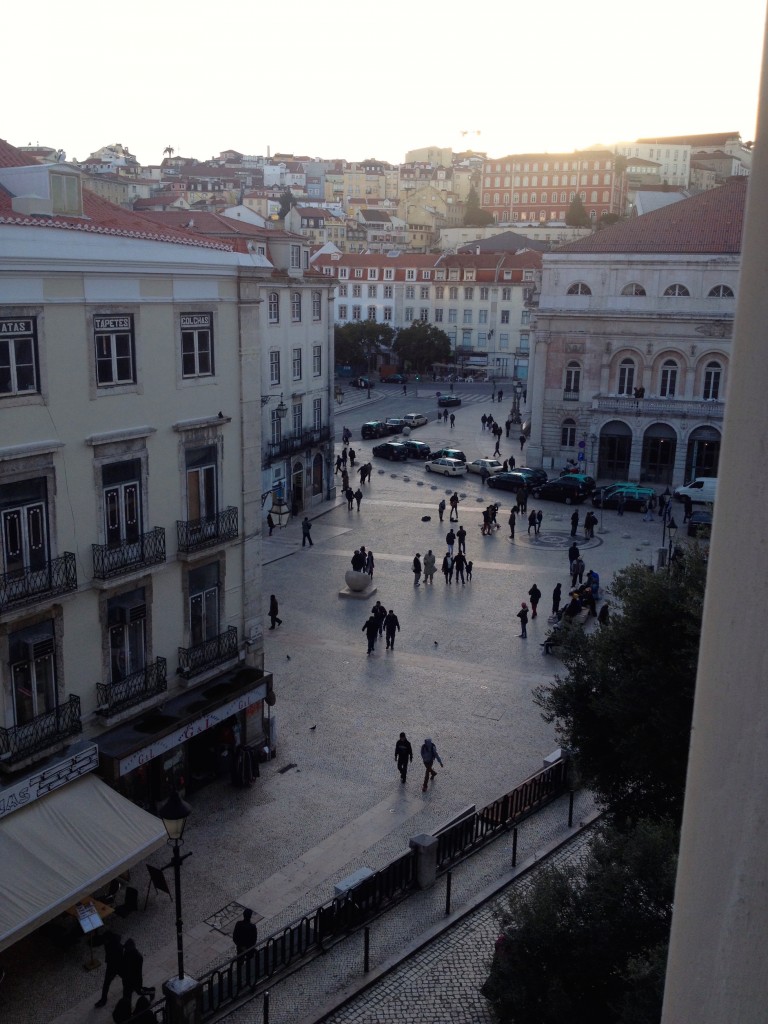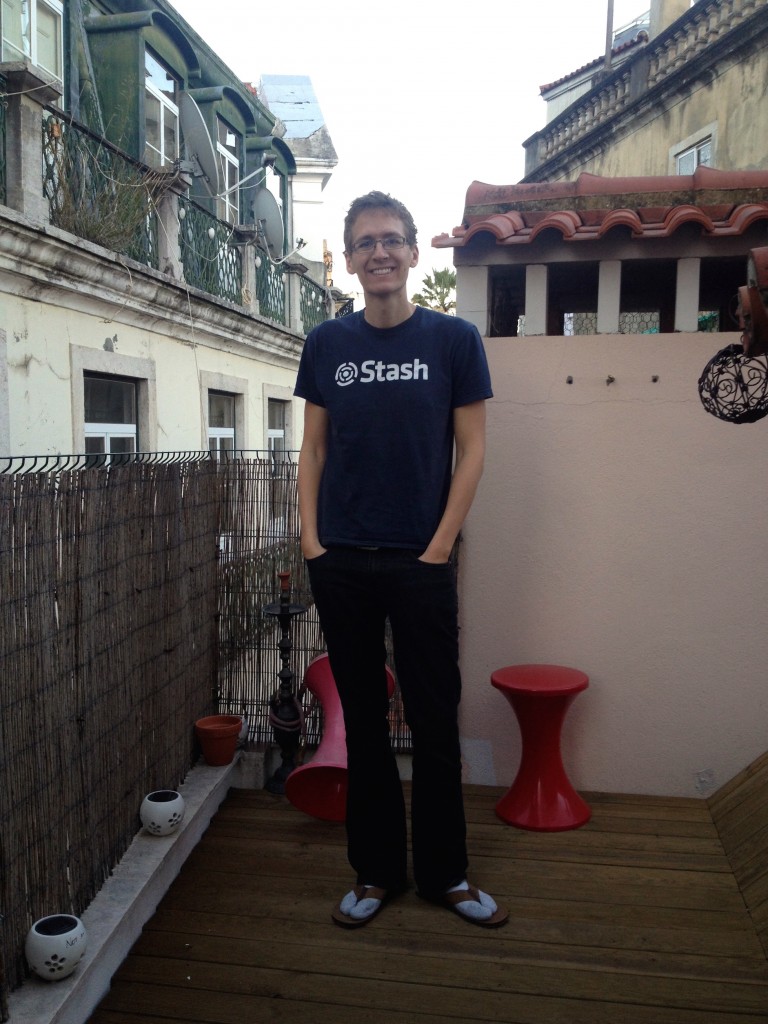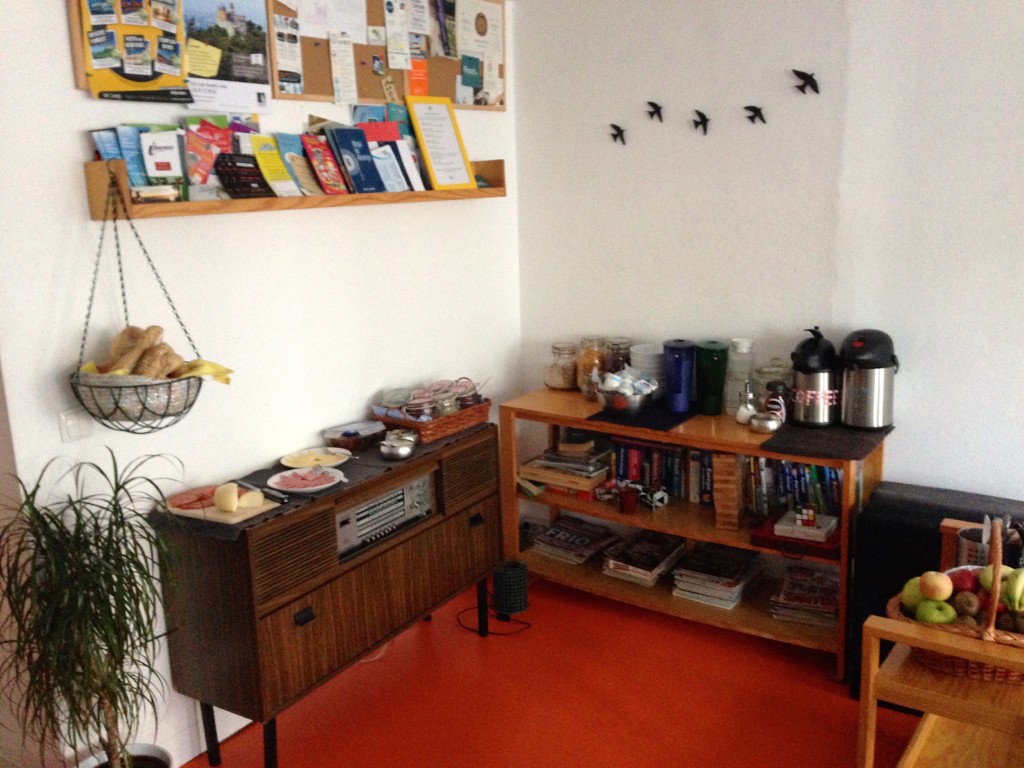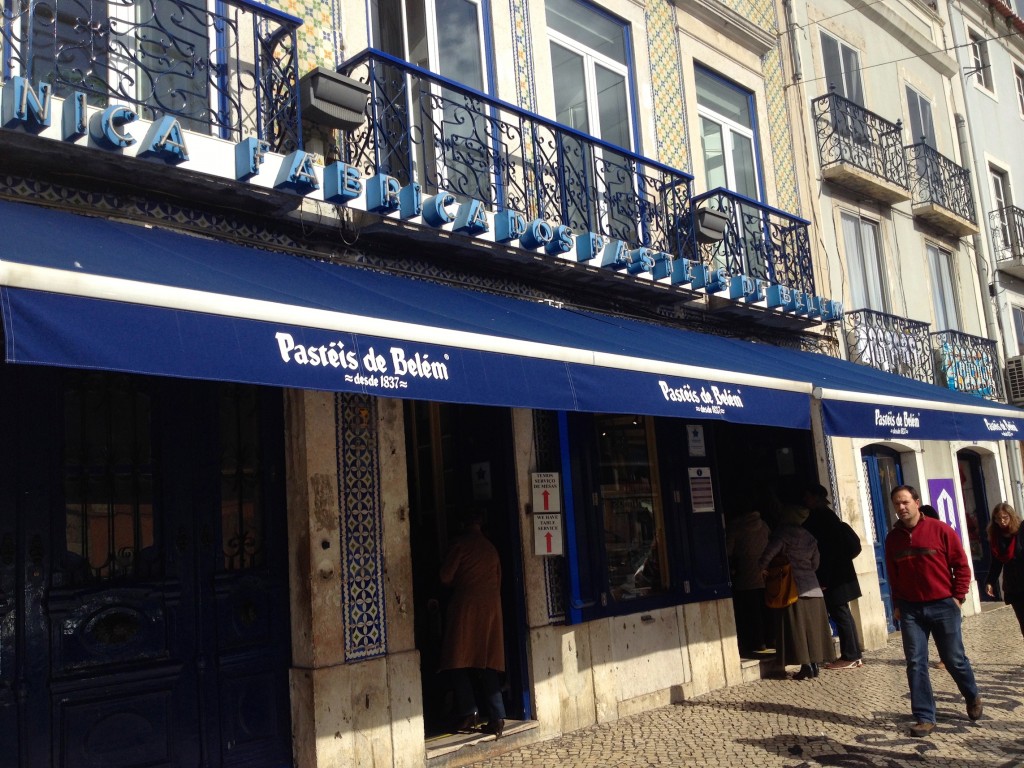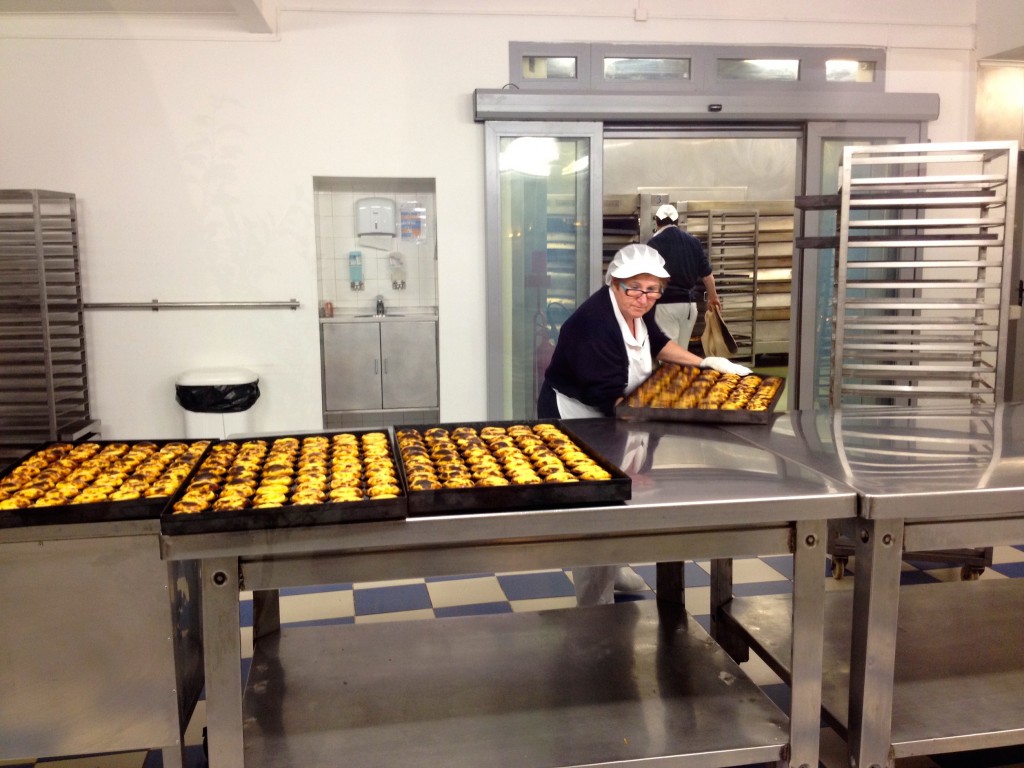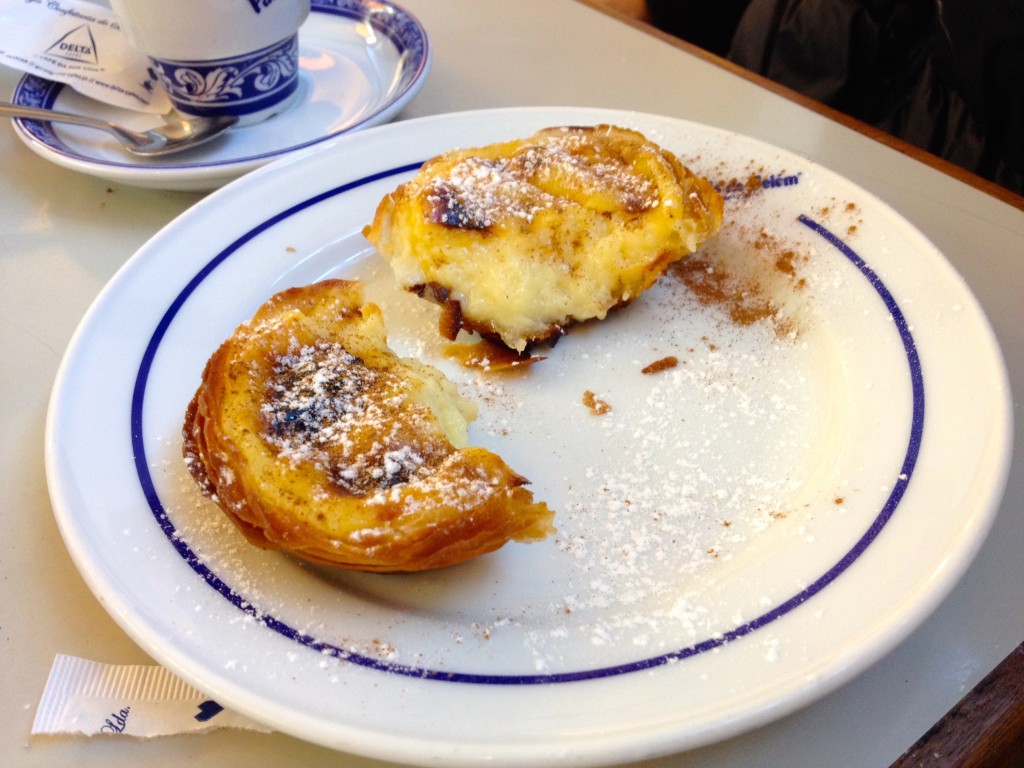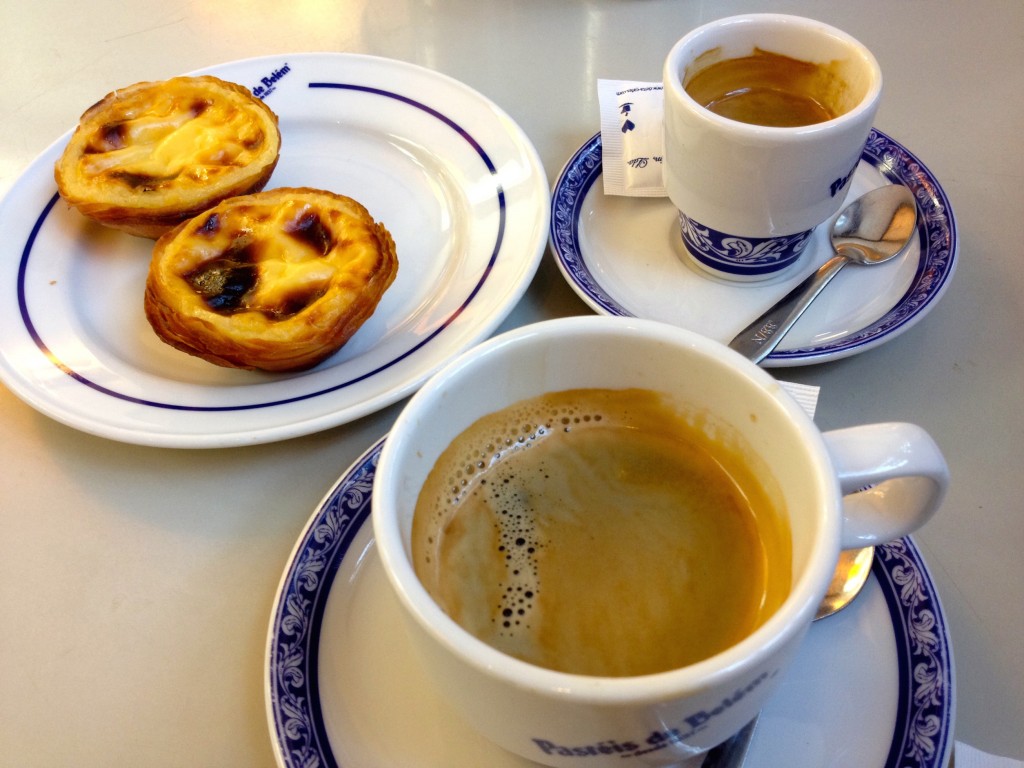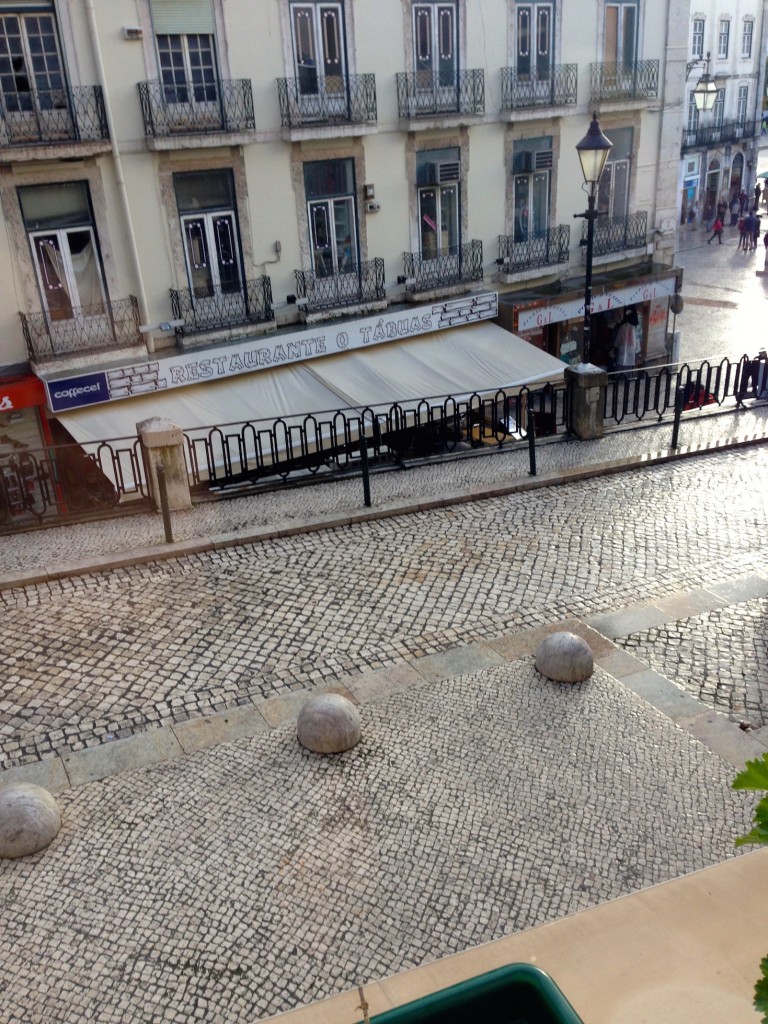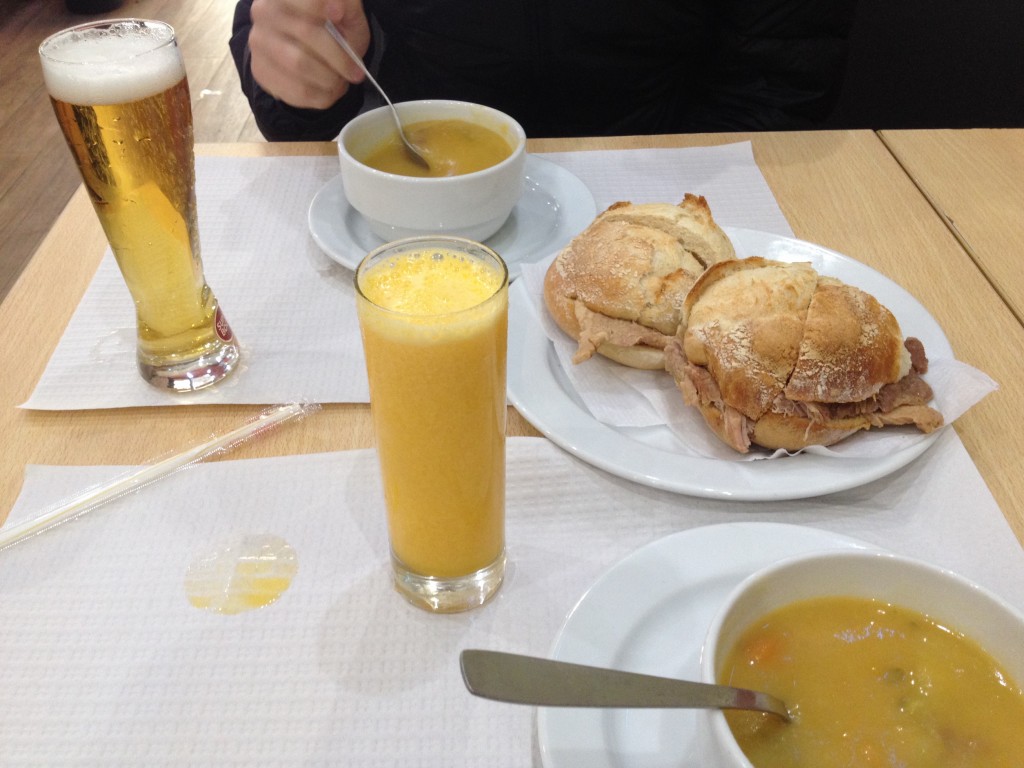We knew embarrassingly little about Lisbon before traveling there in February. Part of being on the road for a year is that you just get tired of researching destinations. If a couple people tell us they really loved a city, it’s almost guaranteed to land on our let’s-spend-a-whole-month-there list! It’s a pretty easy test to pass; if it’s safe and has a cost of living a lower than Seattle, we are IN!
Lisbon was one of those trips we made on a total whim. We couldn’t spend a whole month there because of our visa limitations here in Europe, but we’re glad we gave it three nights. Lisbon feels like a small version of Paris, complete with its own Triumphant Arch (pictured above). It’s a fun city to enjoy on foot and is full of vibrant neighborhoods with lots of character. What it lacks in good food (we were sorely disappointed) it makes up for in its incredibly fascinating history. People also repeatedly tried to sell us weed – one guy even tried to sell us cocaine! So that’s something.
What to Do in Lisbon
When we weren’t buying weed and cocaine (totally kidding), we spent our days exploring Lisbon, riding adorable trolleys, drinking coffee, and eating pastries. We gathered those up here in our Guide to Lisbon. Some of our favorite things to do in this vibrant city:
Learn About the Huge Earthquake of 1755
This was the most fascinating part of our trip. I had no idea that Lisbon had been through such a tragic disaster. In November 1755, on a Sunday morning when much of Lisbon was at church, a giant earthquake hit the city. The massive quake’s magnitude is estimated to have been about 9.0, a true monster. People who were attending mass were killed in huge numbers, crushed as the churches crumbled around them.
Many people panicked and fled devastation by scrambling onto boats for safety, only to be met by a tsunami that raged up the Rio Tejo river. The huge 20-foot wave capsized ships, roared over the seawall, and came as far as 800 feet inland. Then came the fire, started by fallen candles or cooking fires that were burning when the quake hit. The city burned for five harrowing days, completely engulfing the downtown area of Lisbon.
It’s estimated that 90,000 of Lisbon’s then 270,000 citizens were killed in this terrible event. What I found really interesting is that many Portuguese people thought that this was God’s way of punishing them for the Inquisition. (At the height of the Inquisition in Portugal in the 1500s, thousands of Jews were murdered.) King Jose I was so traumatized by the earthquake that he resisted living in buildings for the rest of his life; he moved his royal court to the neighboring suburb of Belém where he set up a huge complex of fancy tents.
There are two sights where you can still see the vivid reminders of the 1755 earthquake.
- The Convento Carmo
- It was haunting to see the Gothic arches that remain after the 1755 Earthquake.
The first and best is the Convento do Carmo was almost completely destroyed by the quake, but its Gothic arches were left standing as a permanent reminder of the devastating event. We went back and forth about paying the €3,50 to go in, but we’re so glad we did. I think this is one of Lisbon’s most underrated sights. It’s definitely impactful to stand in what use to be the church’s nave, imagining the horror that people went through on that day.
The small museum housed in Convento do Carmo also has two mummies on display that were unearthed during the earthquake. (As if the quake itself wasn’t terrible enough… did they really need MUMMIES to be coming out of the ground too?! I mean COME ON.)
- Convento do Carmo
- I can’t imagine being here when the quake struck.
- Remains of Convento do Carmo.
The other sight which still shows damage from 1755 is the Church of São Domingos:
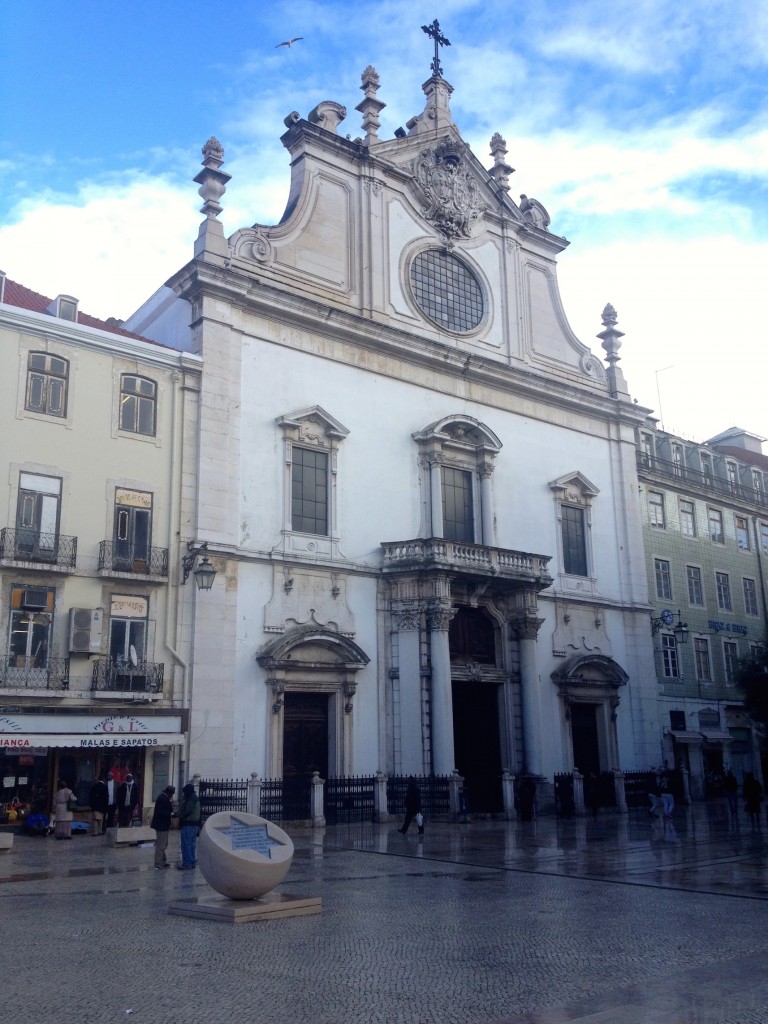
The Church of São Domingos is located on the square that was once the center of the Inquisition. Now, this square holds a monument bearing the Star of David as a memorial to all those who were killed during those sad times. The church was heavily damaged in the earthquake in 1755, and many thought God was punishing them for the atrocities that happened on the church’s doorstep during the Inquisition in the 1500s.
This church was rebuilt from the ruins left by the earthquake, and there are still places inside where you can see char marks from the horrible fires that followed the quake.
Visit the Monastery of Jerónimos in Belém
This building is spectacular, and was built by King Manuel as a thank-you-gesture for the discoveries that early Portuguese explorers made all over the world. It is ginormous (300 yards long!), and is divided into three parts: church, cloister, and maritime museum. The church piece is free and totally worth doing. The cloister costs €10 and is fun to see if you’re really into architecture or churches. We skipped the Maritime Museum.
- The interior of the beautiful church.
- A memorial to Luís de Camōes, perhaps Portugal’s most famous poet.
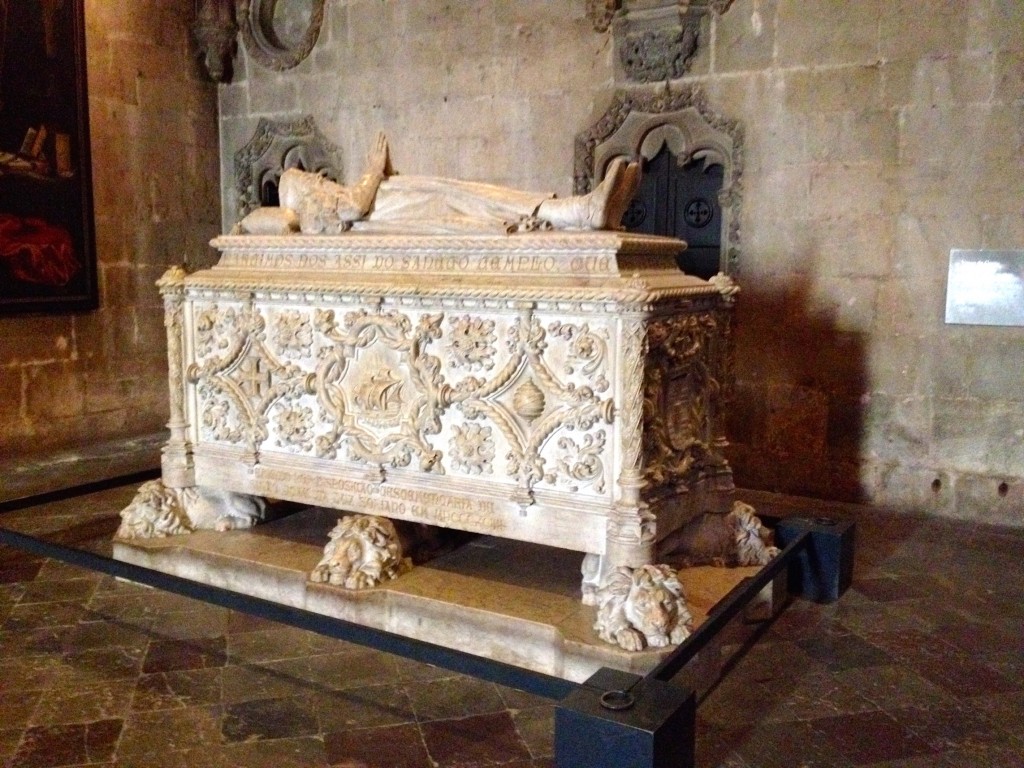
We saw the tomb holding Columbus’ remains while we were in Spain, now we got to see the tomb holding the remains of the famous Portuguese explorer Vasco de Gama!
I paid to visit the Cloisters while Kevin hung out in the park across the street enjoying the gorgeous day. He’s becoming quite the photographer with his iPhone; here are a few pictures he snapped:
- Sunshine in February.
- Reflections on Horses.
I really enjoyed my visit into the Cloisters – the Manueline architecture is just beautiful:
(Click any of these photos below to enlarge them.)
- A beautiful courtyard inside the Cloisters.
- The rectory where monks had their meals. This is slightly fancier than our dining halls were at NU.
- A fountain where monks would wash up before going into the rectory.
- There is even a cricket gargoyle! How fun!
- This is a confessional where sailors would come to confess sins to the monks before sailing out on long, dangerous voyages.
- With cloisters admission, you get to head up to the upstairs part of the church, home of this crucifix.
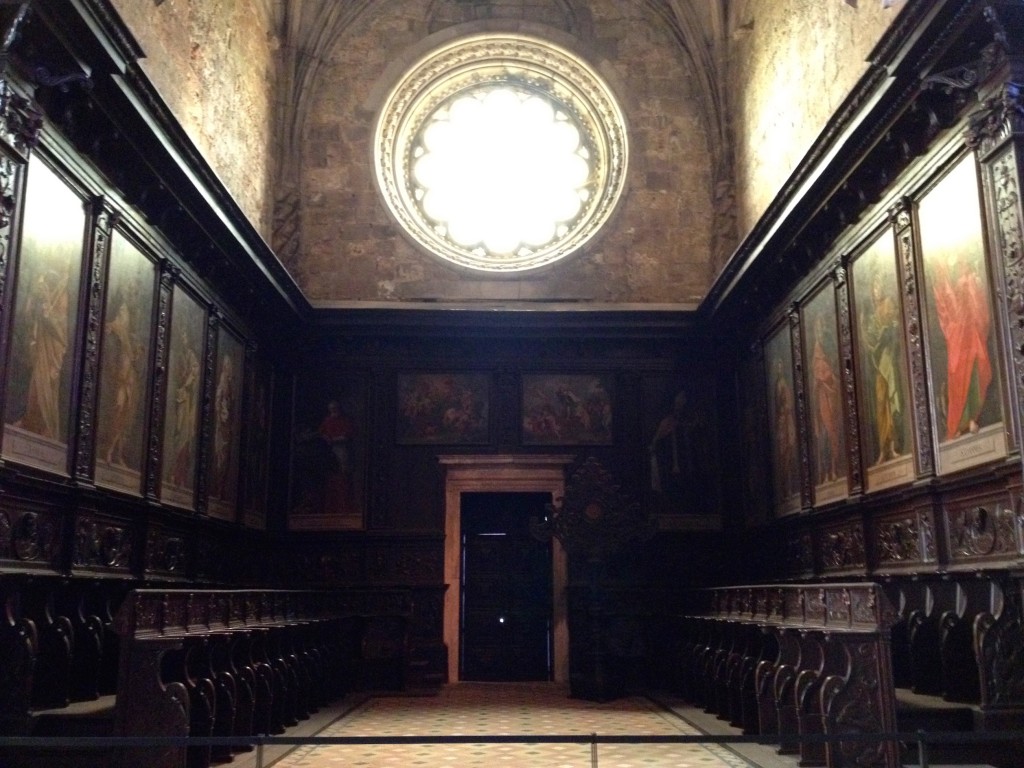
Also upstairs is the High Choir where monks would stand during church services. They were not permitted to sit during mass, so they used the arm rests on the wooden chairs to lean on during services.
Walk… A Lot
We are firm believers that the best way to explore a city is on foot. Rick Steves has something like four walking tours in Lisbon in his Portugal guidebook, so with my Kindle in hand, we explored the city with Rick’s guidance. Some of our favorite things:
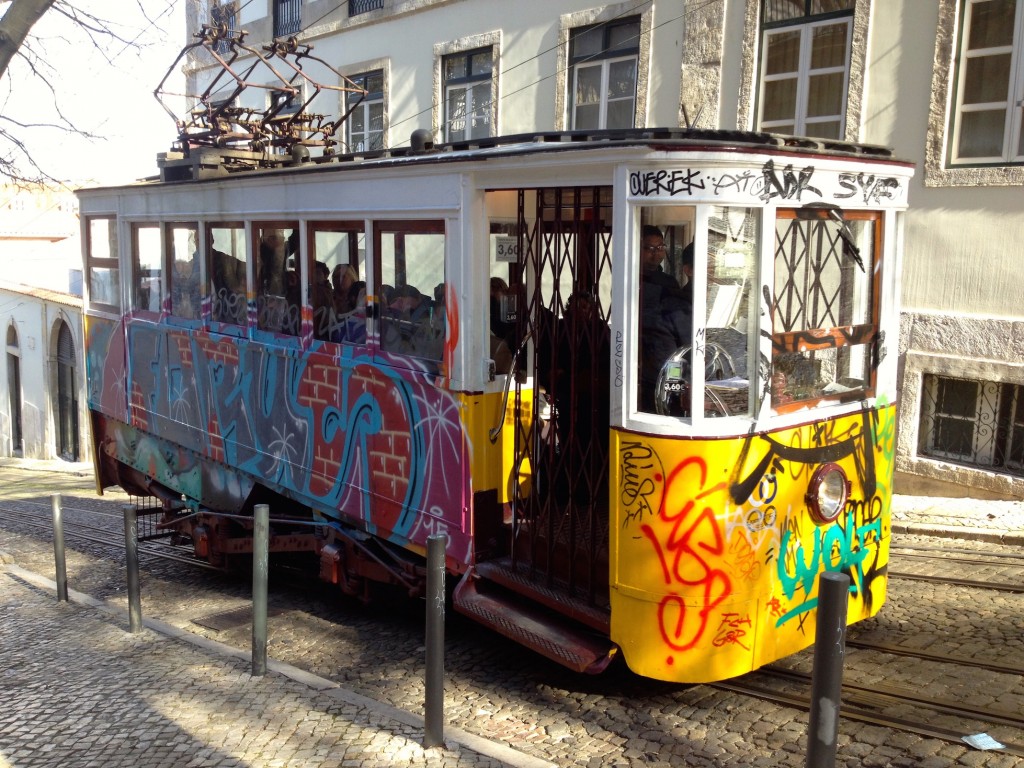
The Elevator Da Gloria Funicular. Spoiler alert: it’s faster to walk up the hill than to take the funicular.
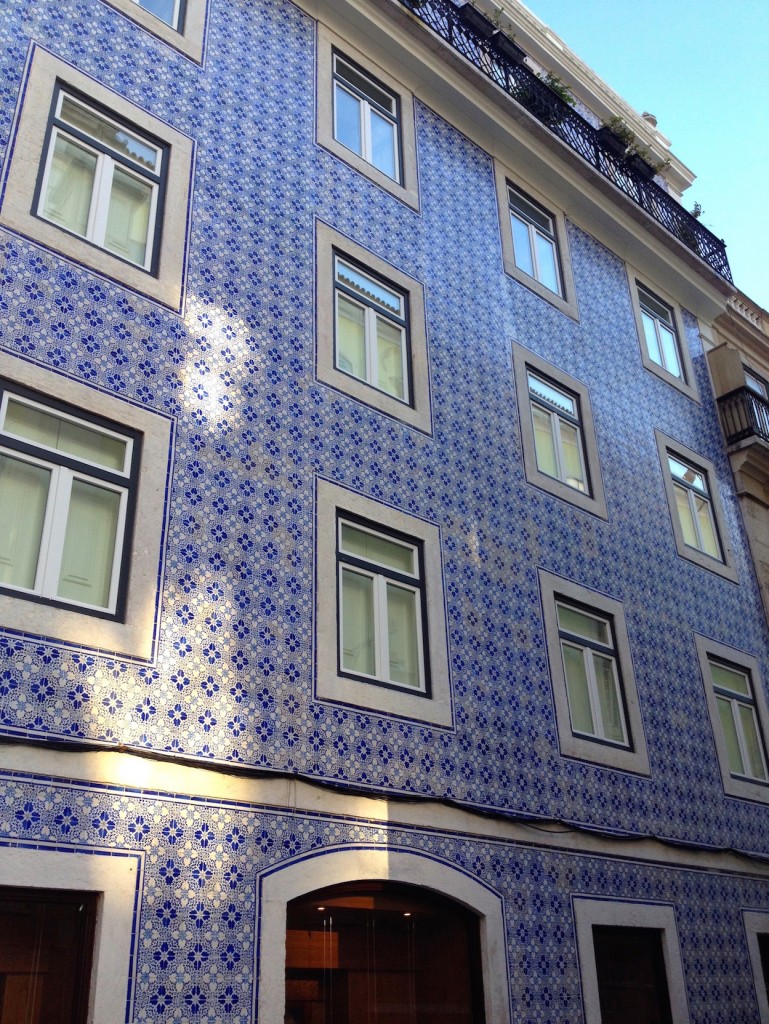
Lisbon is known for its tilework. So many buildings here are completely covered with unique, beautiful tiles.
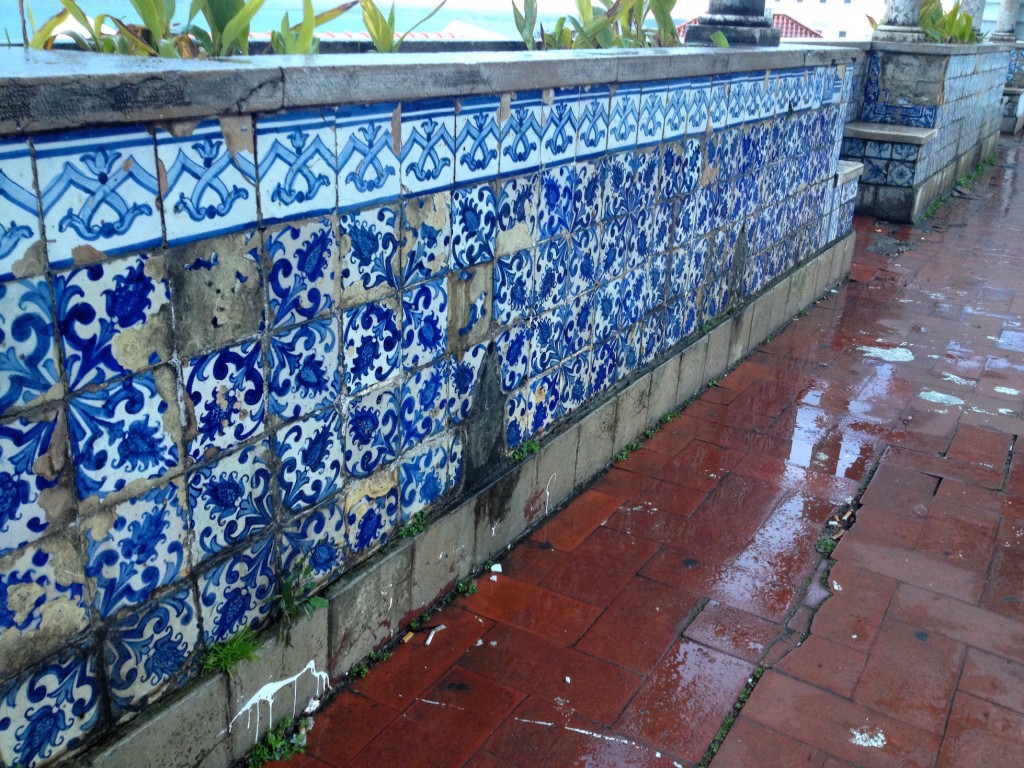
More of Lisbon’s iconic tilework. These crumbling tiles are at the Largo Santa Luzia viewpoint in the Alfama neighborhood.

Behind Kevin is the 25th of April Bridge, one of the longest suspension bridges in the world. It looks like the Golden Gate Bridge because it was built by the same company. We liked it because it’s named for Kevin’s birthday!
- So many cute twisty streets to explore.
- We loved the Alfama neighborhood.
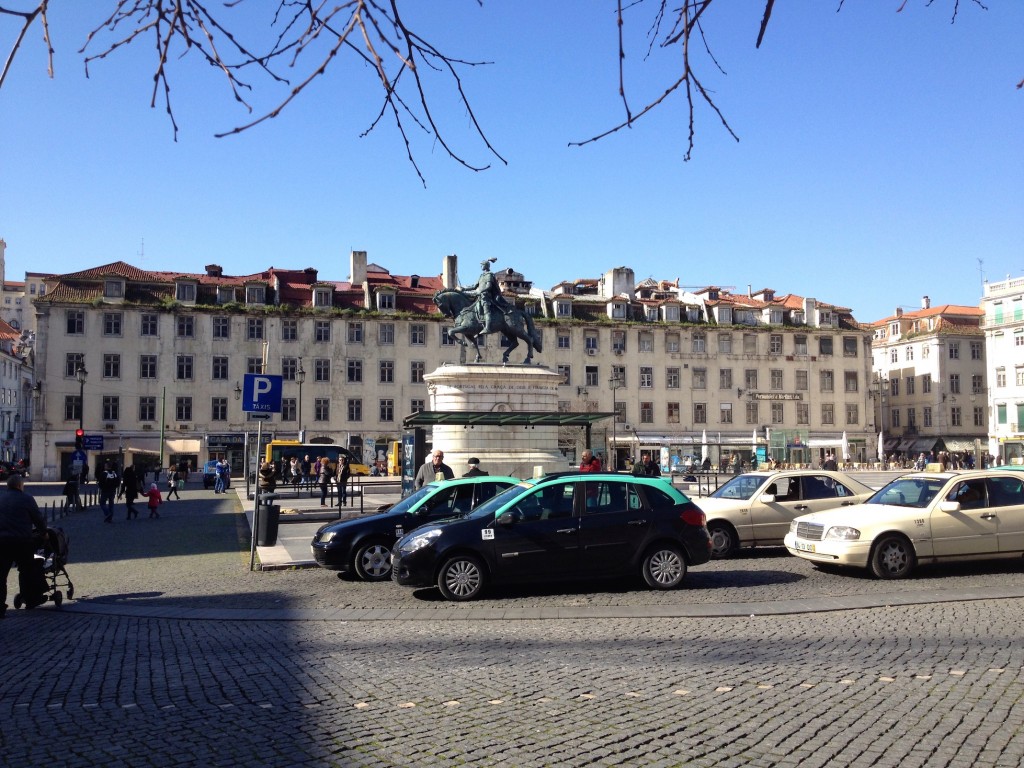
Check out this dilapidated building on Praça da Figueira. There are tons of plants growing on the roof, windows are missing, and parts of the roof are severely slanted. Even though this is a prime spot in Lisbon, this building has been under rent control for decades. Demoralized owners have just let their apartments deteriorate, and the building is nearly empty except for a few people lingering there, living in terrible conditions.

When we didn’t walk, we rode the subway, where men playing accordions walked around with chihuahuas on their shoulders. Of course.
What to Drink in Lisbon
Port
Alright, I’m going to continue exposing my ignorance about Portugal for a moment. It wasn’t until we had already booked our bus/train tickets from Sevilla to Portugal that Kevin and I realized that Port Wine originated in Portugal. To be specific, it gets its name from the town of Porto, Portugal. Makes sense, right? The realization sure made me feel like an idiot.
Our time in Europe has largely been about experiencing as much local beer/wine/liquor as possible, and we made no exception in Portugal. We discovered that The Port Wine Institute has a fun location in Lisbon called the Solar do Vinho do Porto where you can stop in and order from a selection of over 150 different ports! Prices start at just €1,50 per glass. They’re definitely speaking my language with those kinds of prices!
- LOOK HOW EXCITED KEVIN IS FOR PORT!
- Here I am, trying to look classy and blend in with the fancy surroundings.
- Here I am, failing to look classy and blend in with the fancy surroundings.
So we hit the Port Wine Institute, and we hit it hard. The service is a bit icy, so brace yourselves before visiting. In fact, when we asked for help choosing between two Late Bottle Vintage ports, the bartender told us, “well, if you don’t know much about port they’ll taste the same to you.” Ok, ma’am, we’ll take the cheaper one then.
- Saaaaaaaaay porto!
- Obligatory artistic shot with the mirrored tabletop.
Regardless of the somewhat unfriendly service, we still managed to enjoy ourselves. Sometimes it’s just fun to sit and relax in a room full of leather sofas and wood-beamed ceilings, surrounded by hundreds of port bottles, and pretend you’re a multi-millionaire.
Wine
We stopped in at the Vini Portugal Wine Tasting Center to try some of Portugal’s finest wines. You pay by the pour, but glasses start at just a euro. After testing 6 different wines, we feel comfortable declaring Spain the wine winner of the Iberian peninsula wine contest. Sorry Portugal.
- Enjoying some wine tasting at Vini Portugal.
- Wine dispensing machines. If I had a huge house, I might put one of these in somewhere…
Ginjinha
To top off our booze tour of Lisbon, we tried Lisbon’s famous local drink called Ginjinha. It’s a sweet liquor, made from ginja berries, brandy, cinnamon, and sugar. Lots of places around Lisbon sell shots of this stuff for 1-2 euros. We tried it at “A Ginjinha”, the most well-known hole-in-the-wall bar, located right on Largo de São Domingos.
Honestly, I’d rather drink cough syrup than this stuff. At least then there might be some medicinal benefits. But you have to try it if you’re in town.
Where to Stay in Lisbon
If we ever return to Lisbon, you can bet your bottom dollar we’ll stay at the Lisbon Story Guesthouse again. We booked a small, simple room in their hostel-style guesthouse for €40/night including breakfast.
- Our comfortable, clean room.
- Check out the view from our window!
- For good measure, here’s my husband wearing socks with sandals on the teeny tiny rooftop patio.
This was our first foray into sharing a bathroom, and I was so surprised that it did not make me irrationally angry like I expected. The entire guesthouse (including shared bathrooms) was spotlessly clean!
To top it off, breakfast was fabulous. They had six types of homemade jam plus NUTELLA!
If you’re traveling to Lisbon on a budget, we highly recommend giving this place a try!
Where to Eat in Lisbon
I almost left this section out. If you’re crazy about meat and bread, Lisbon may be the place for you. However, if you enjoy a green vegetable every now and then, I wish you luck traveling there.
We did manage to find a few things that made us happy, though.
Pastéis de Belém
This cafe is the birthplace of Lisbon’s famous custard tart called the Pastel de Nata. Obviously, we had to stop by and try them out! This place is so popular that they crank out upwards of 20,000 custard tarts each day. Since they are making so many, you’re almost guaranteed to get one fresh out of the oven, which makes all the difference in the world!
- The outside of Pastéis de Belém Cafe.
- Churning out those Pastel de Nata!
- Be bold with the powdered sugar and cinnamon – it made it at least three times tastier!
- Coffee and pastries – yum.
Restaurante o Tábouas
On a whim, we stepped into a hole-in-the-wall restaurant across the street from our hotel to try their lunch special. For just €3,50, you get a Bifana (pork sandwich), big bowl of vegetable soup, and either a fresh squeezed orange juice or a beer! It was delicious, and was certainly the best bargain we found in Lisbon. If you want to give it a try, it’s located here.
- It’s hard to spot – we noticed Restaurante o Tabuas from our room in the Lisbon Story Guesthouse.
- Two lunch specials!
We Want to Hear from You!
Have you visited Lisbon? Did we miss anything? Did you manage to find any restaurants that made you happy? If the answer to any of those questions is YES (or if you just want to say hi!), please leave us a comment!
